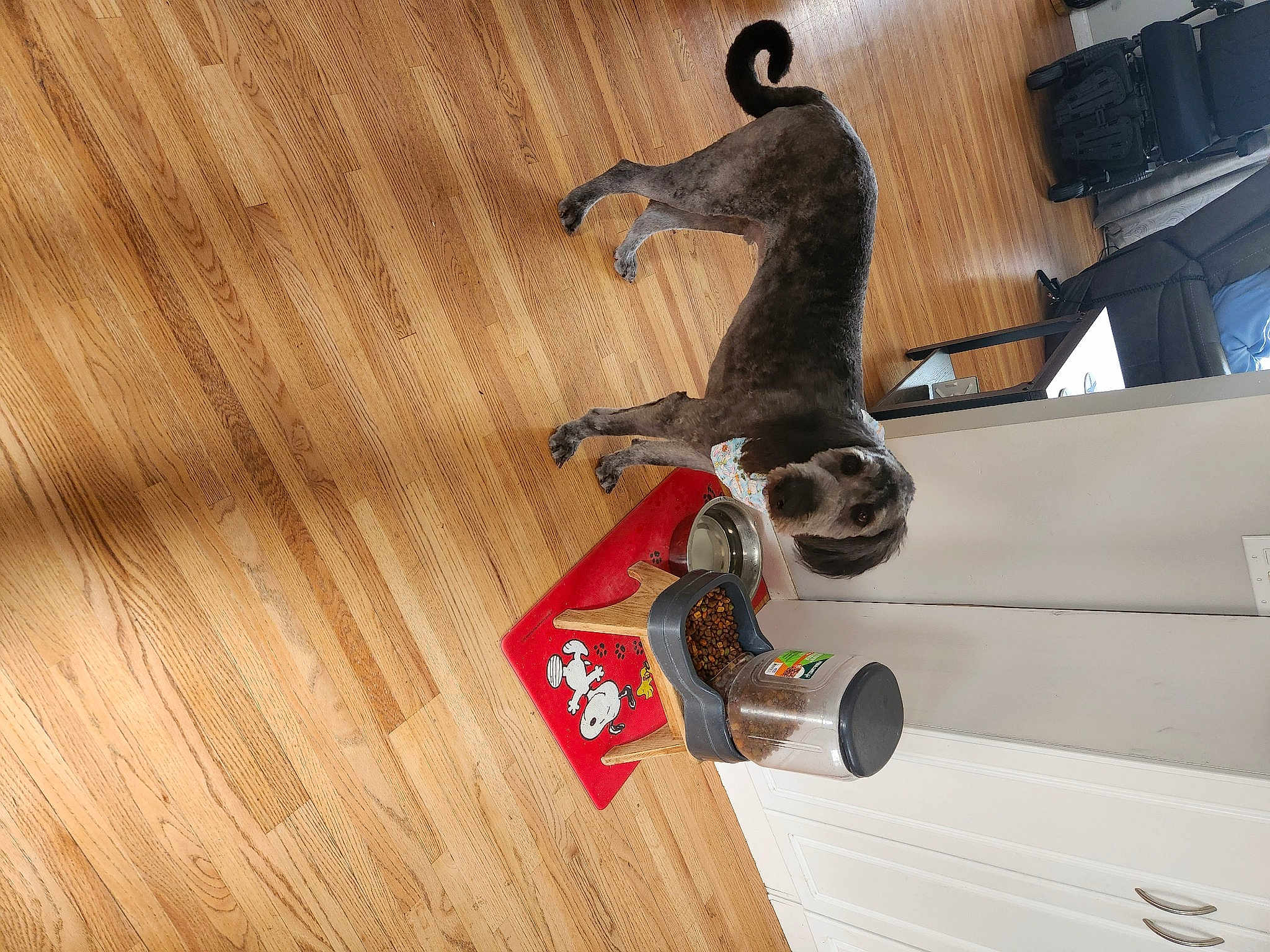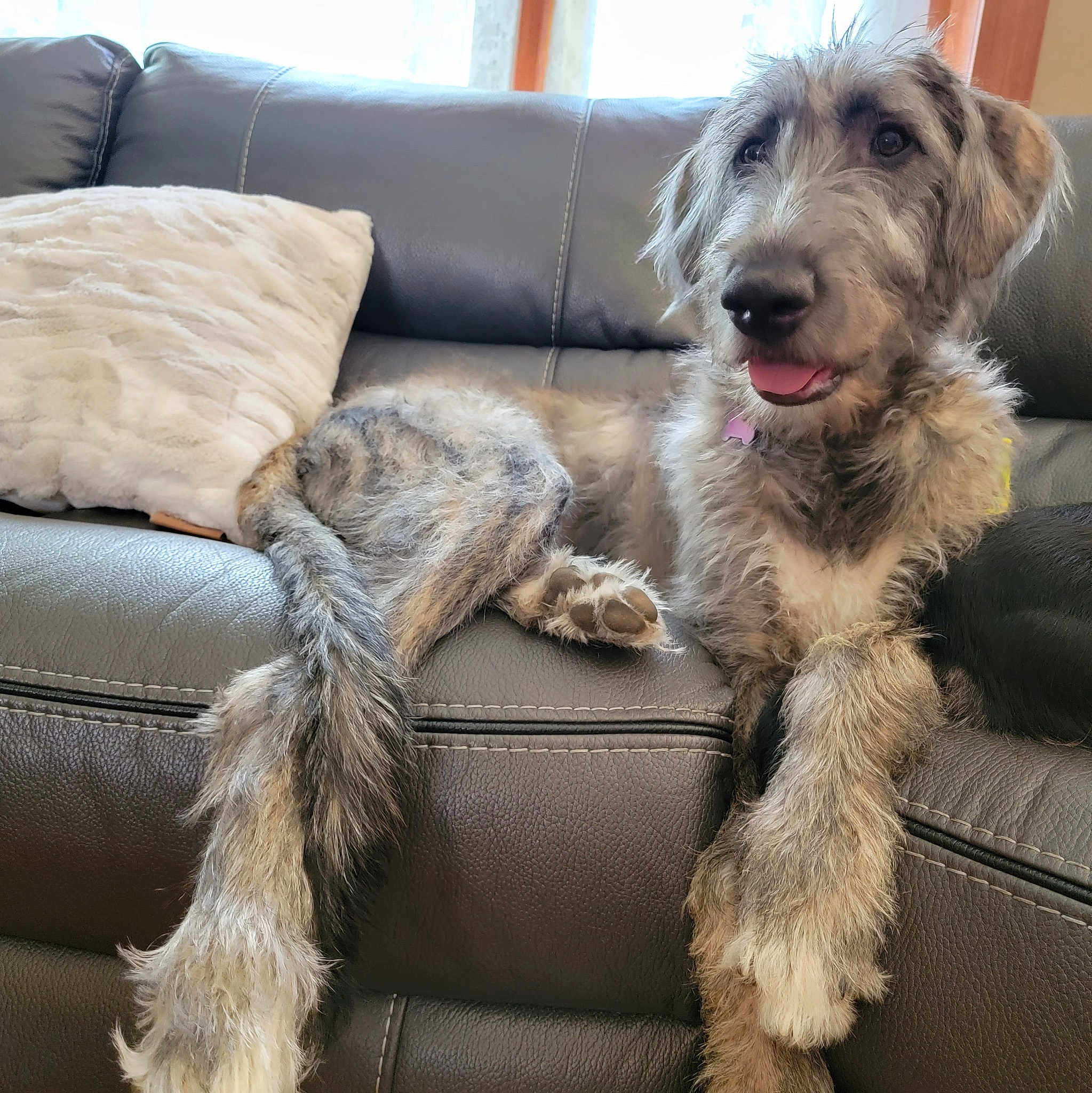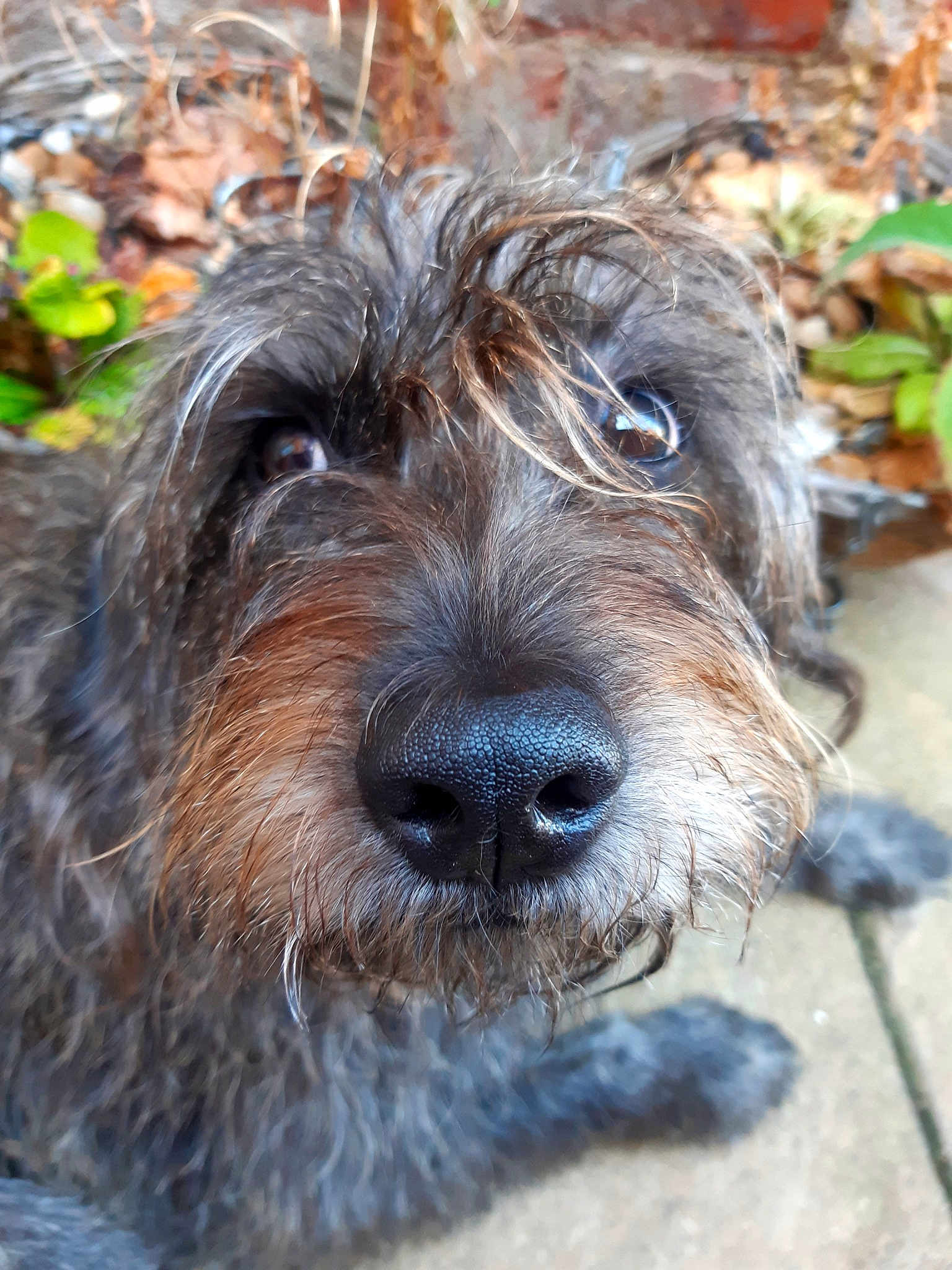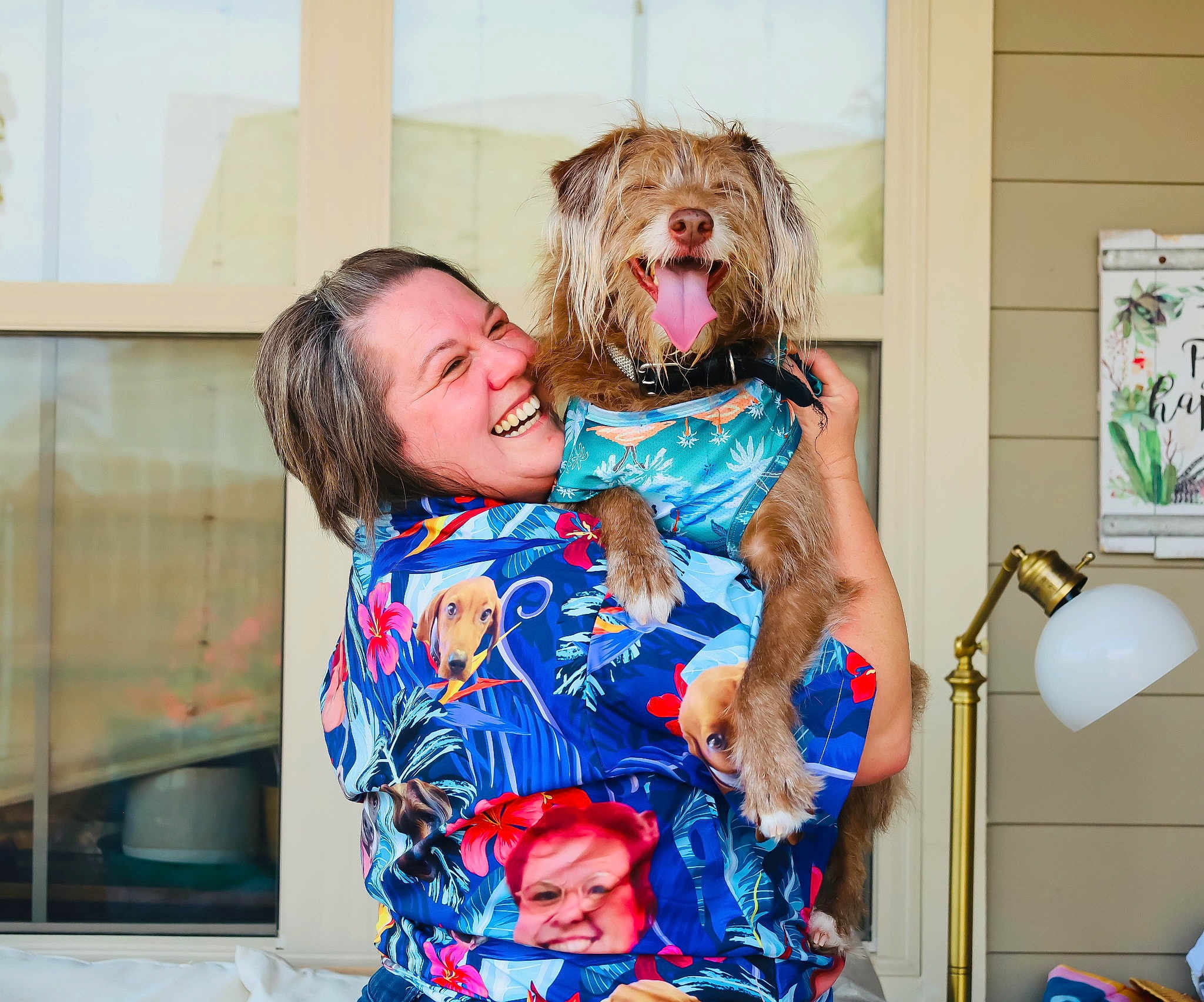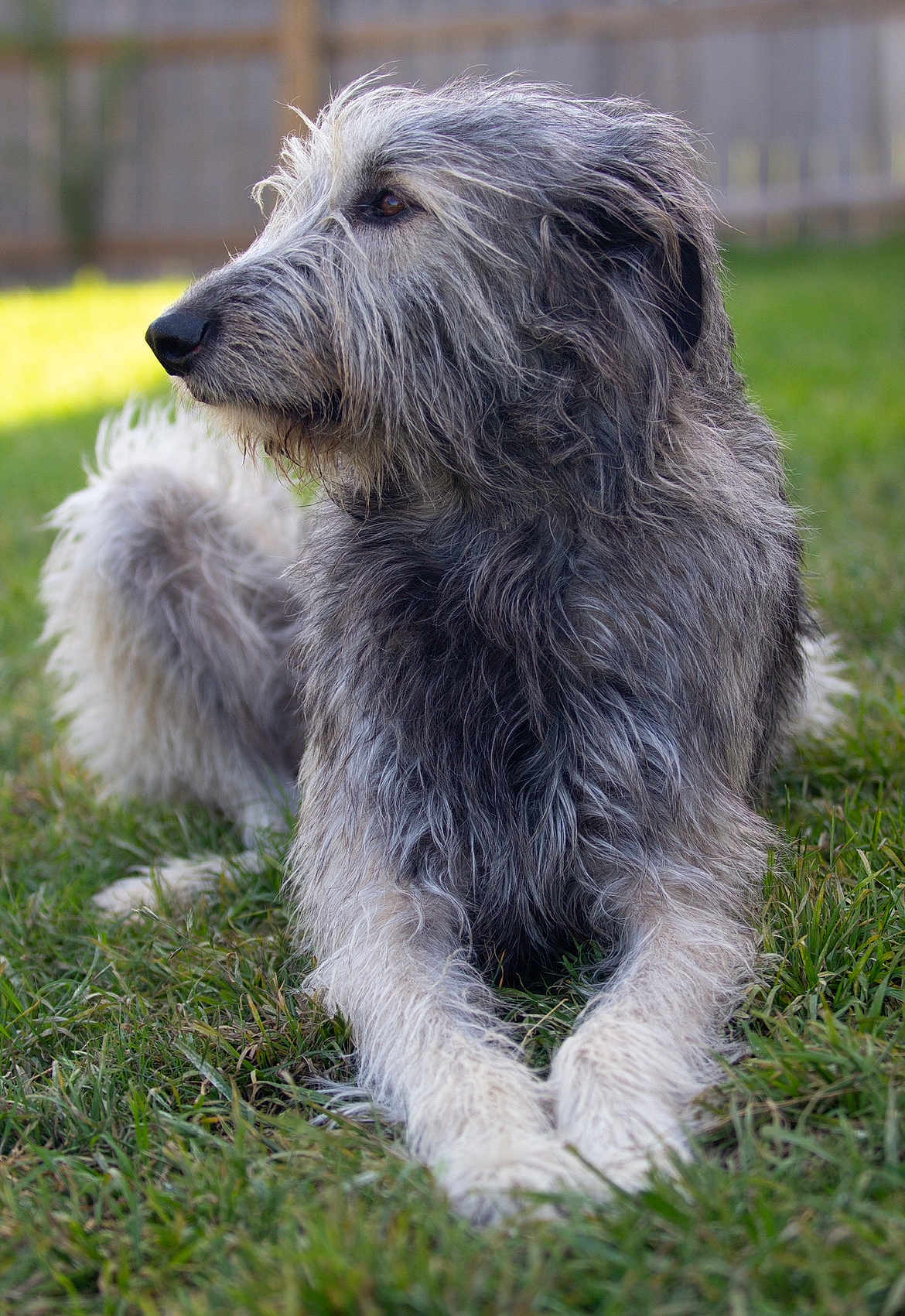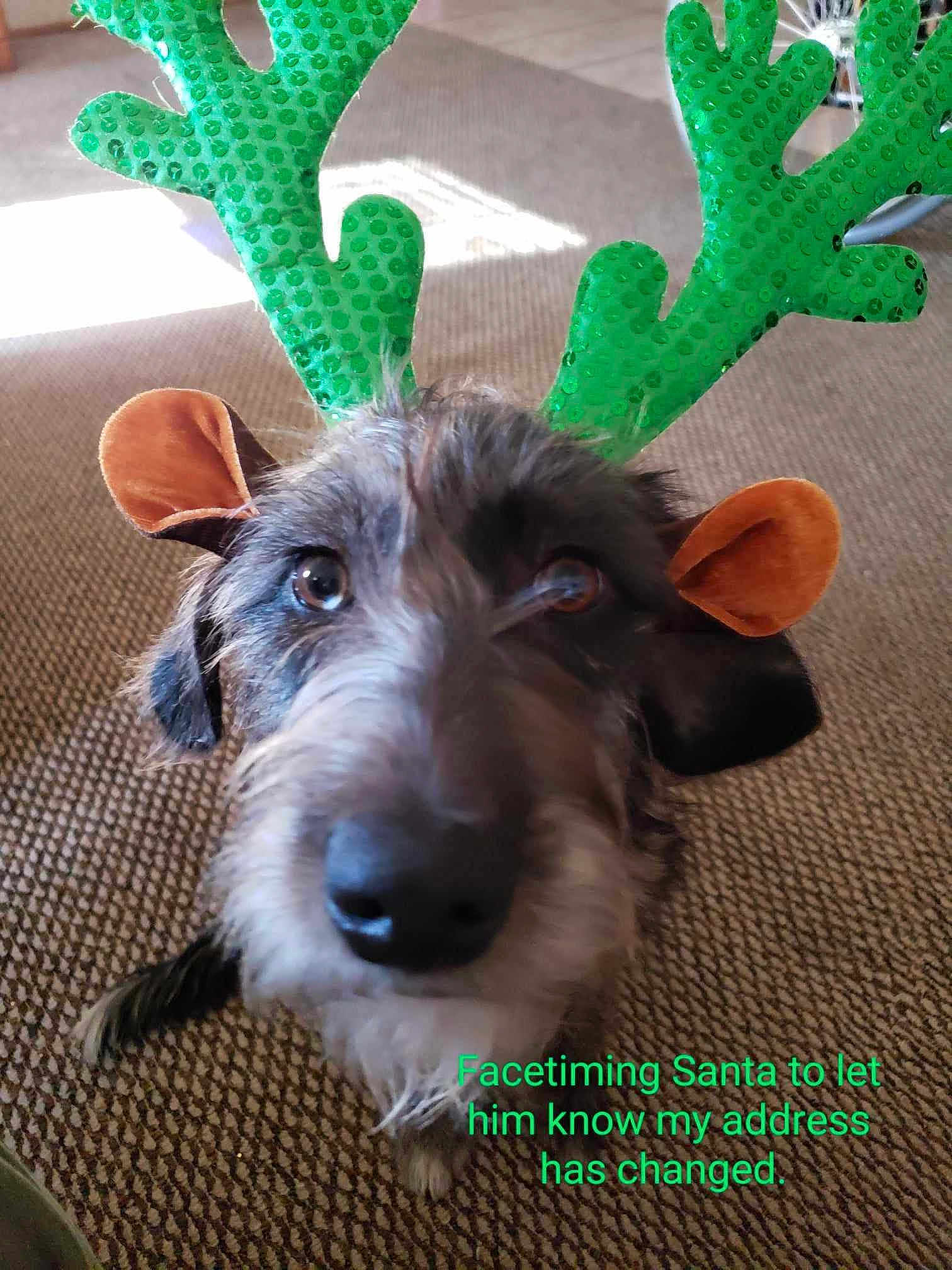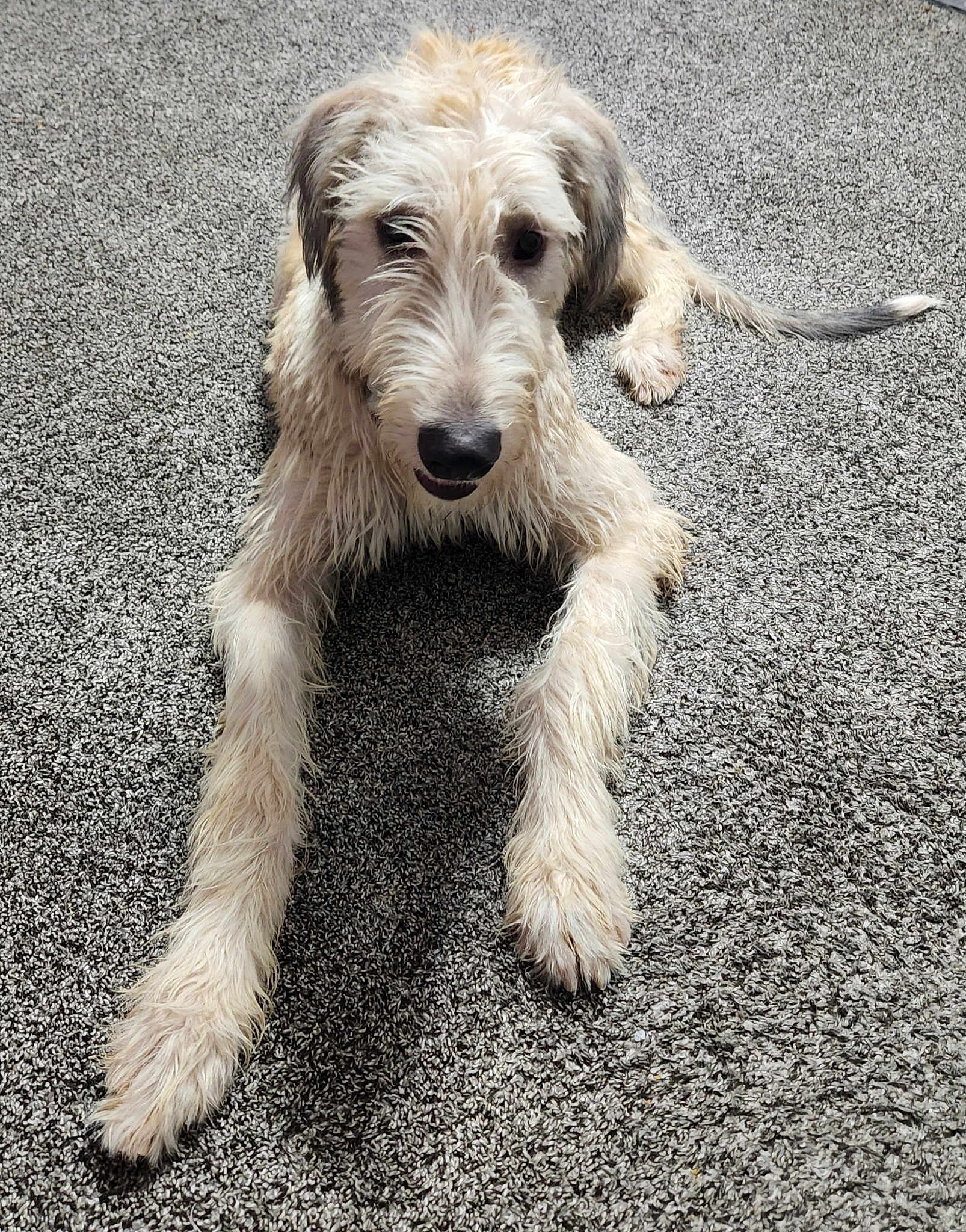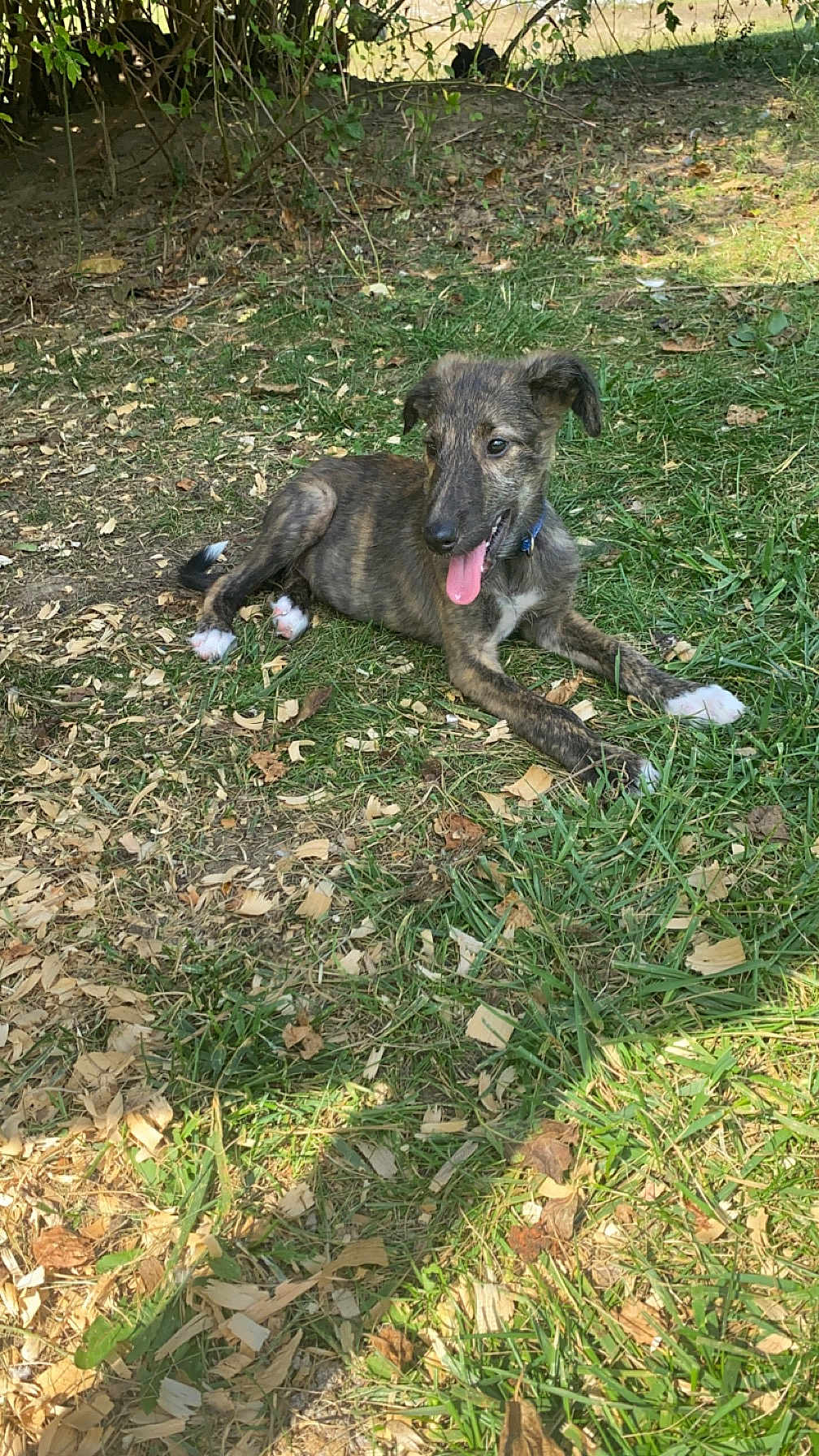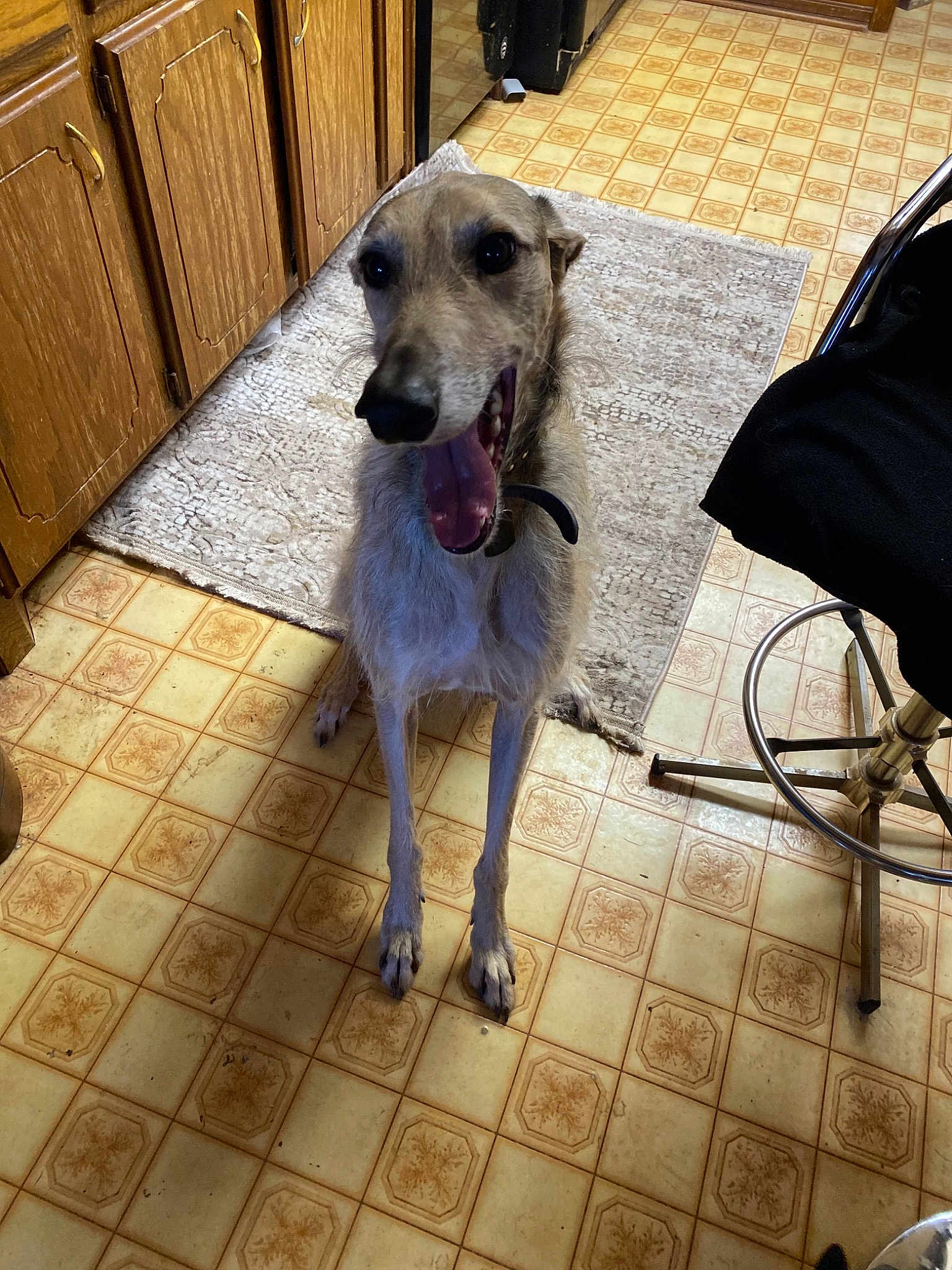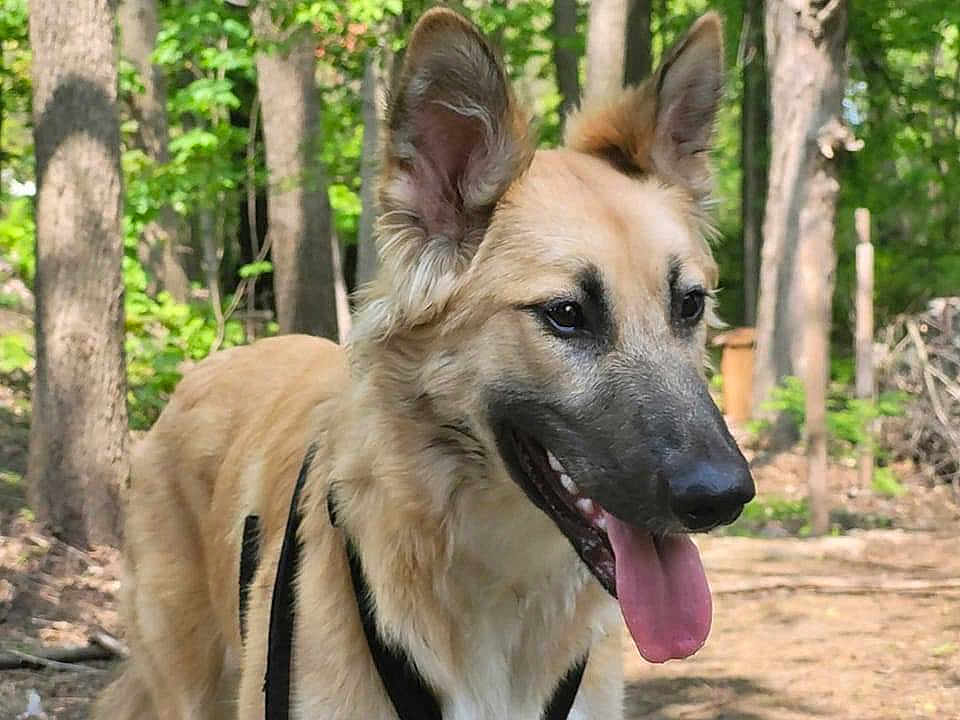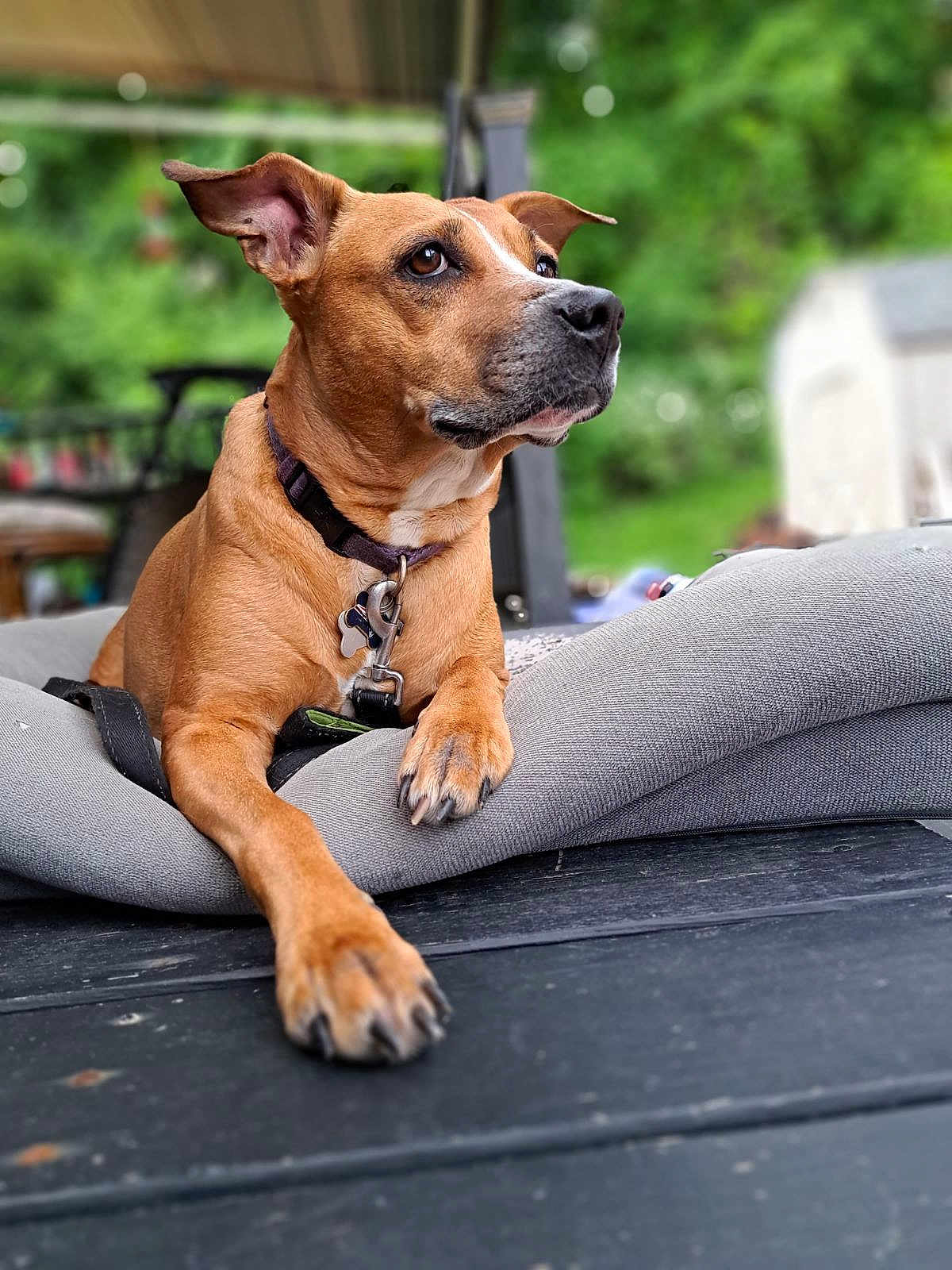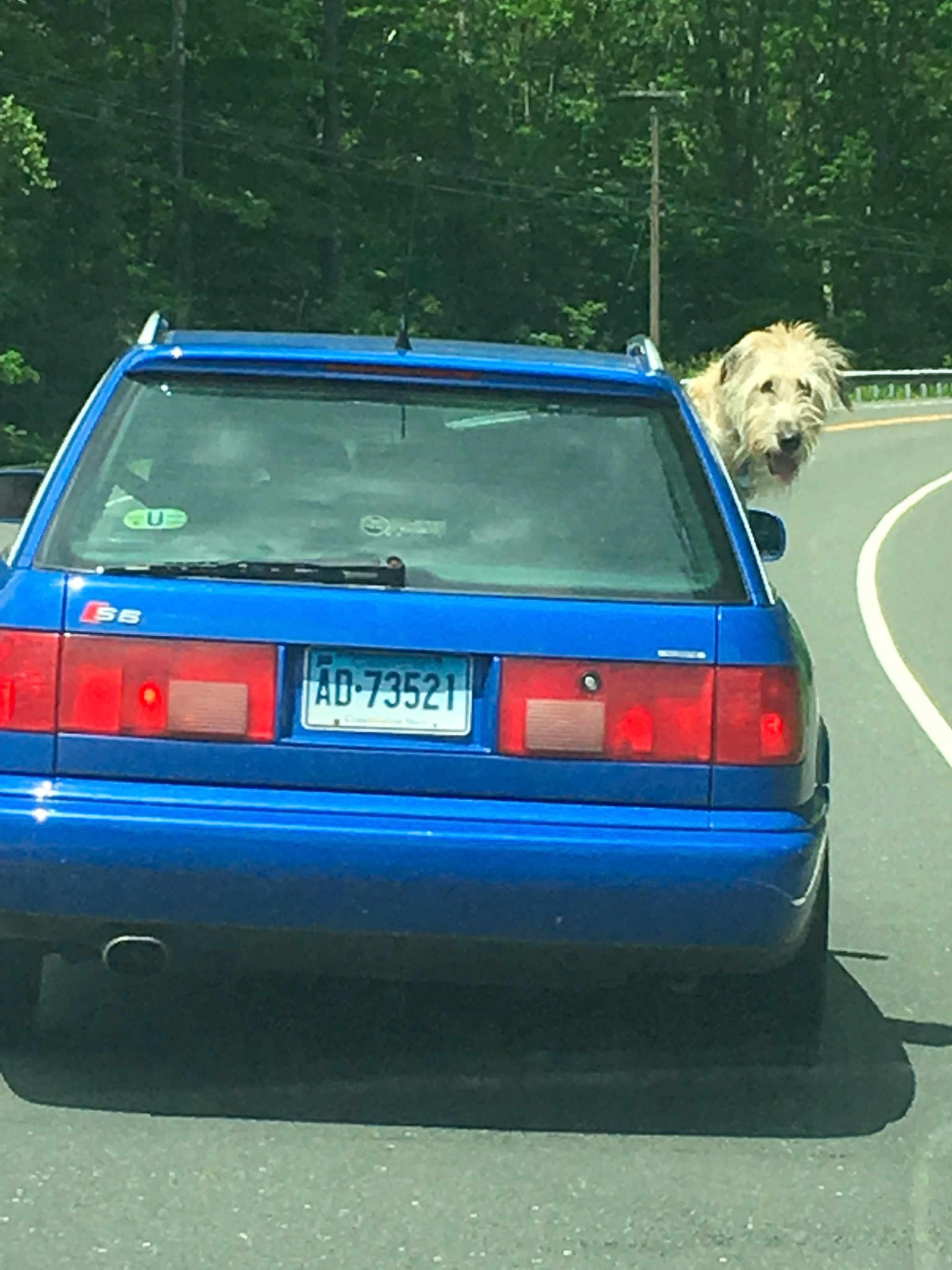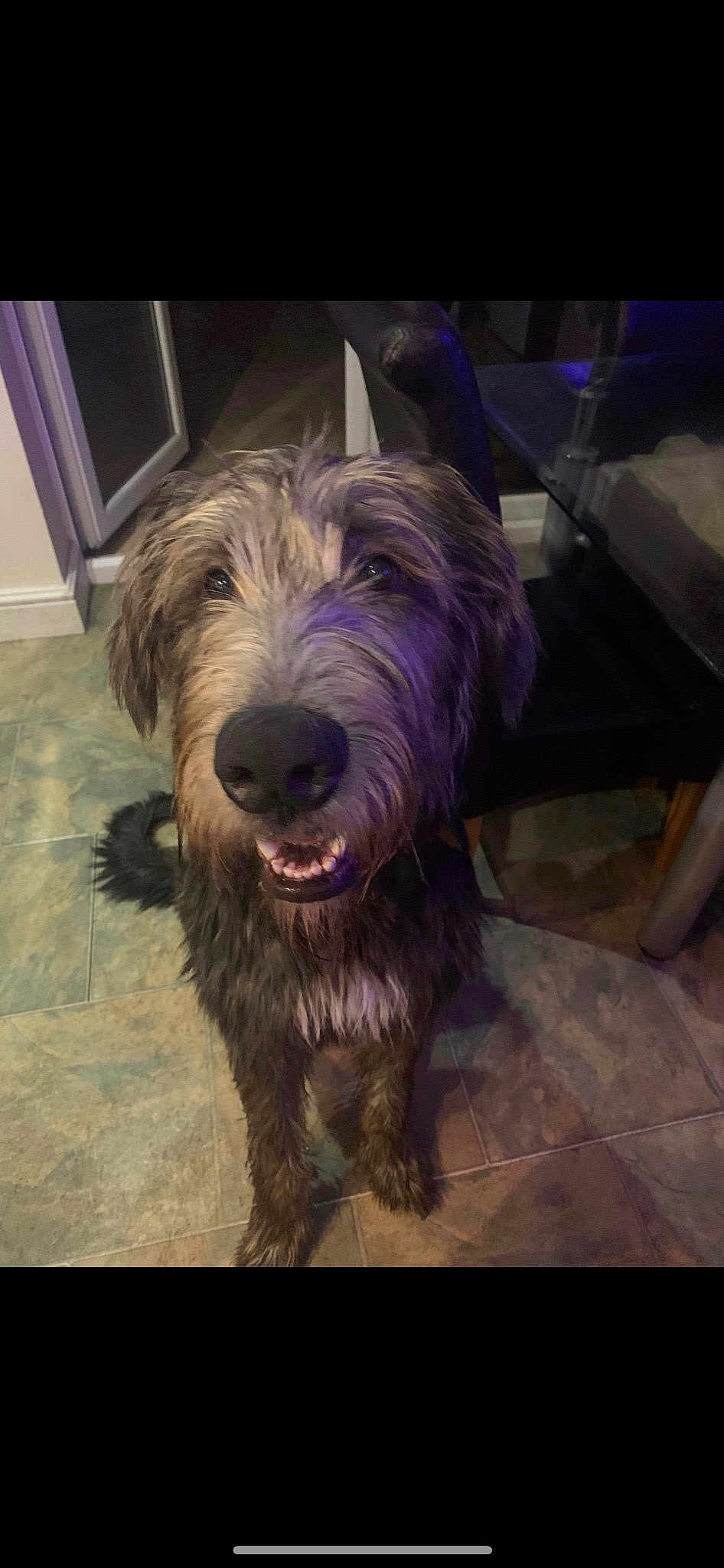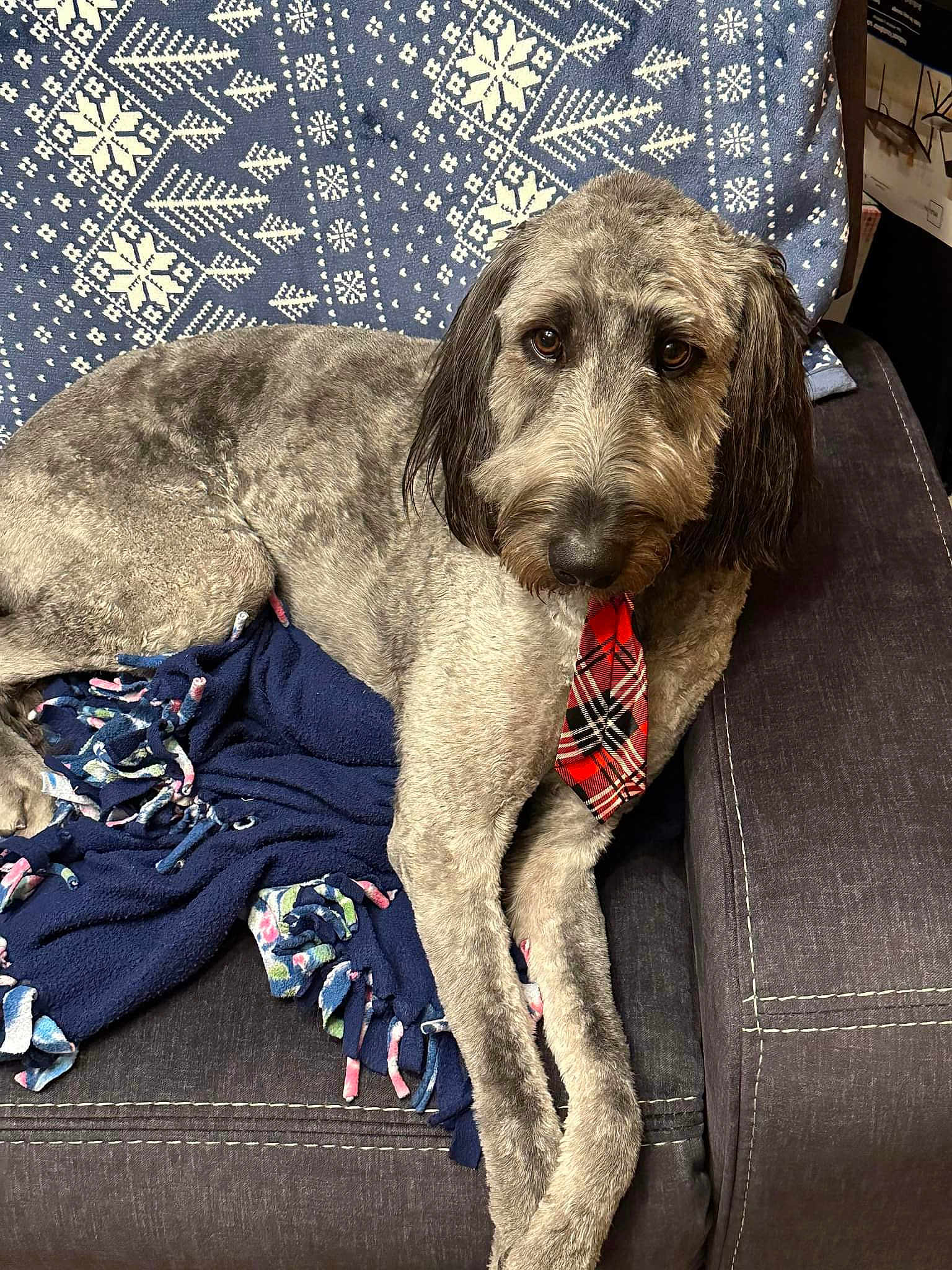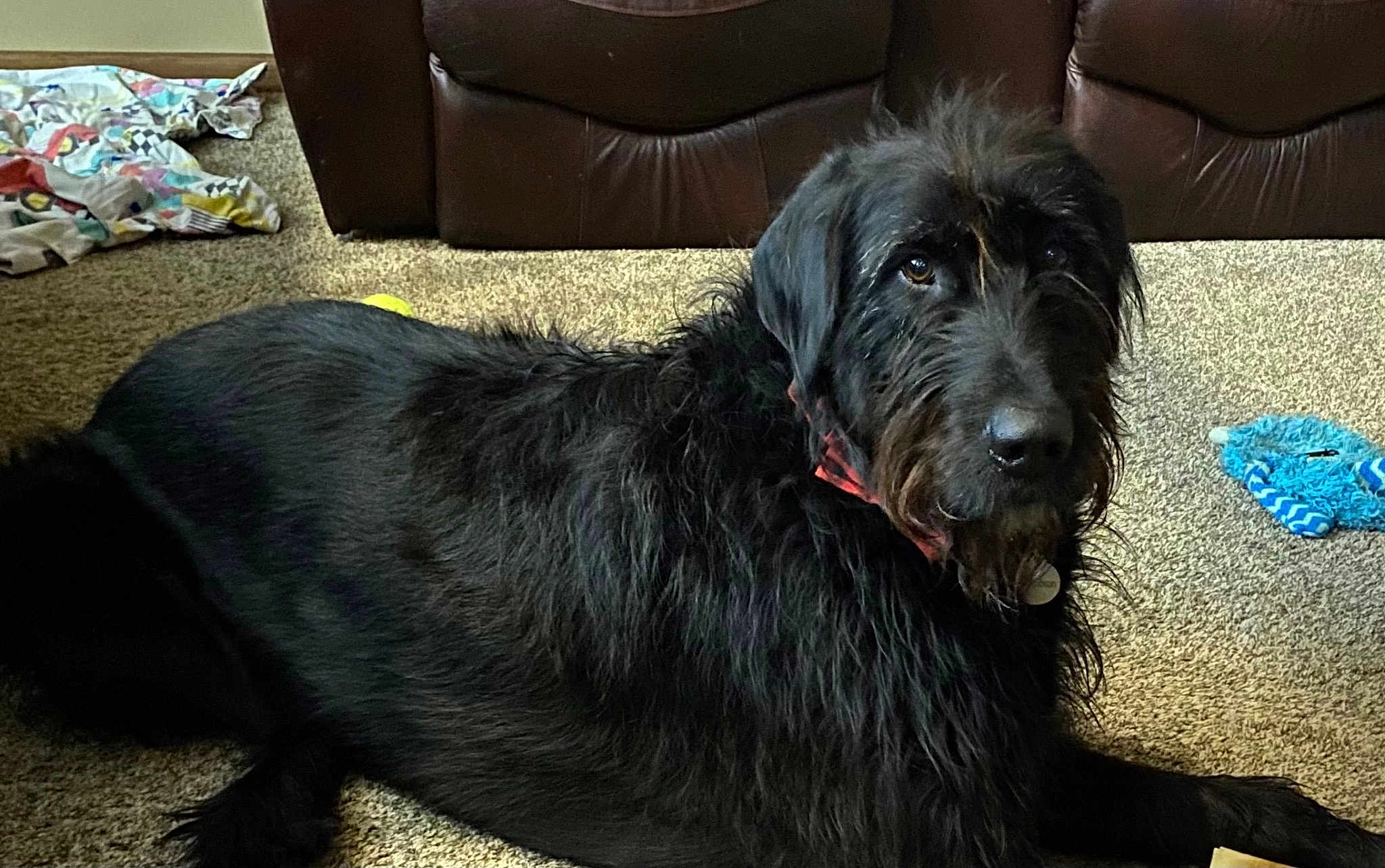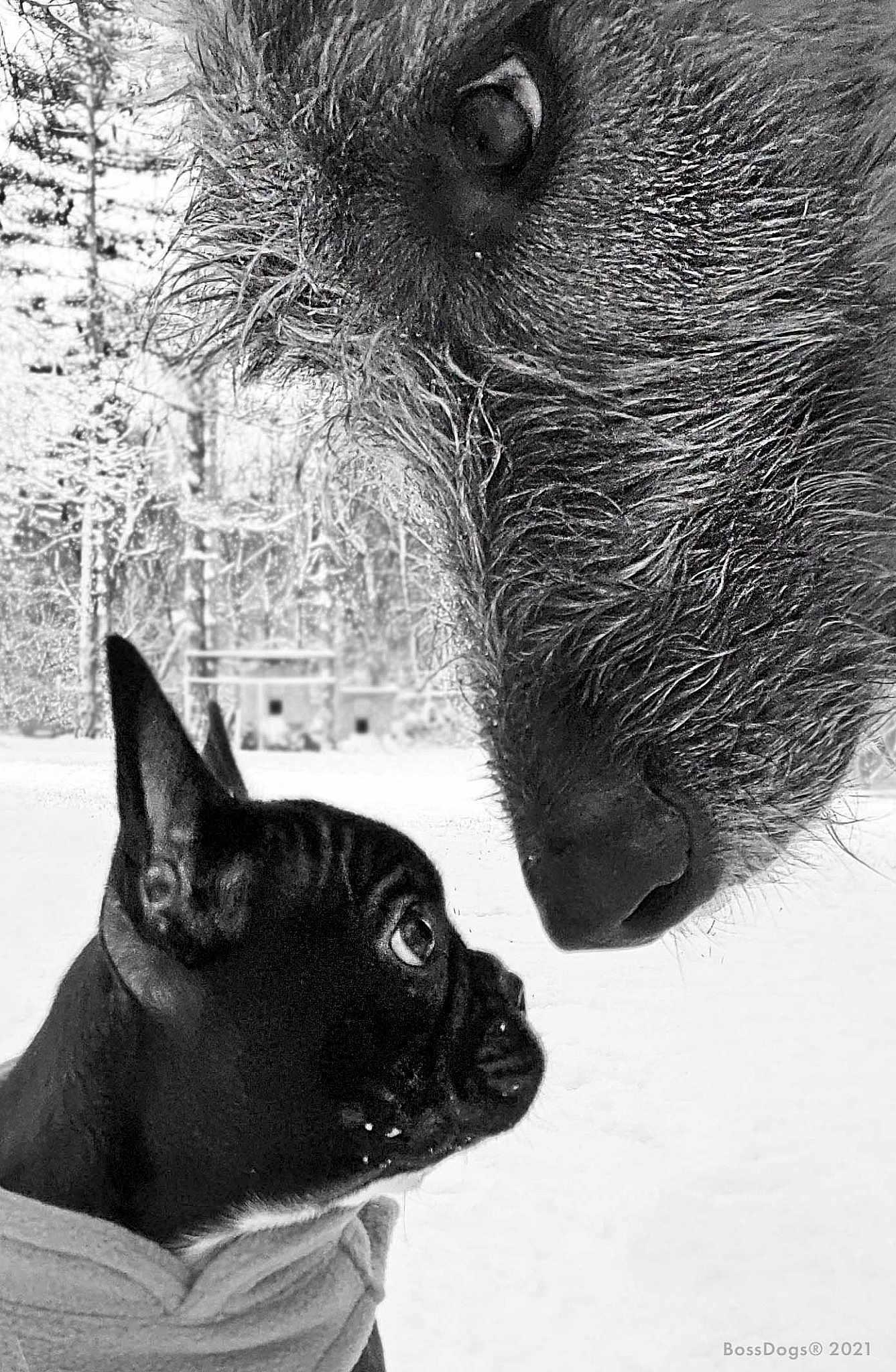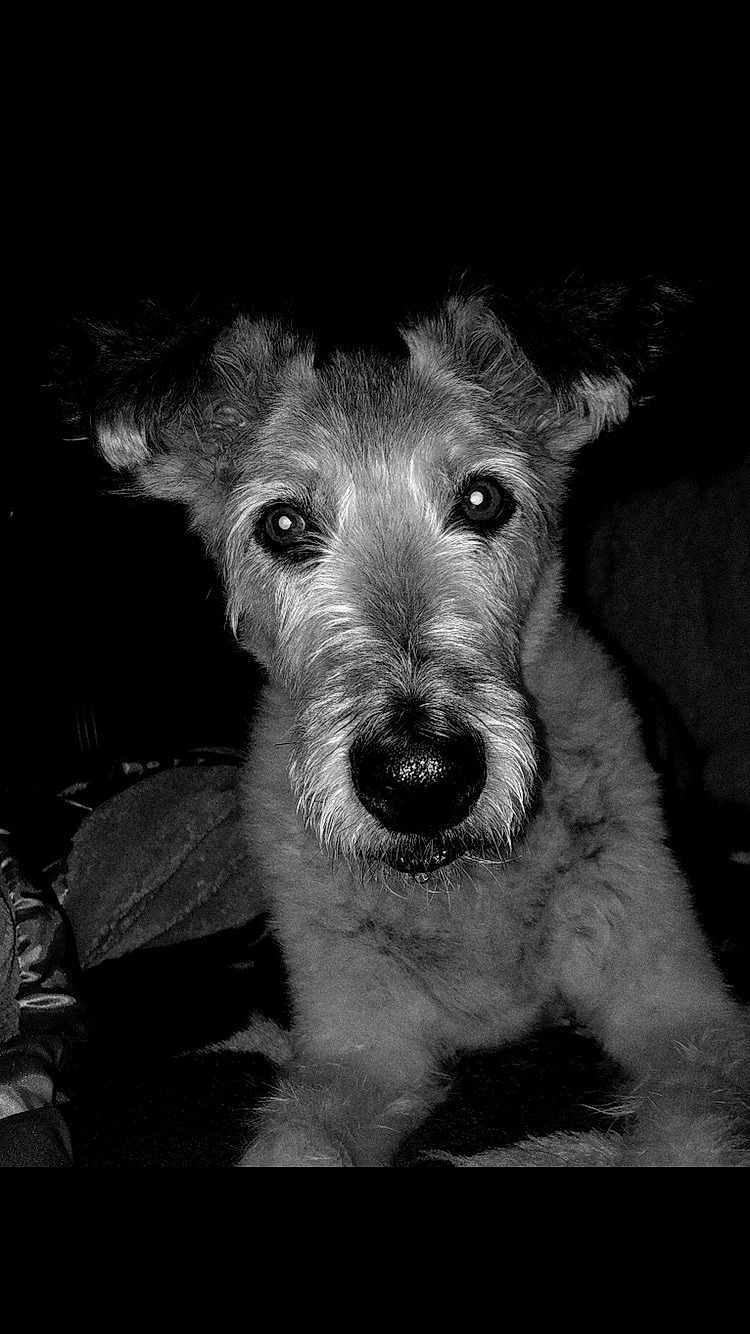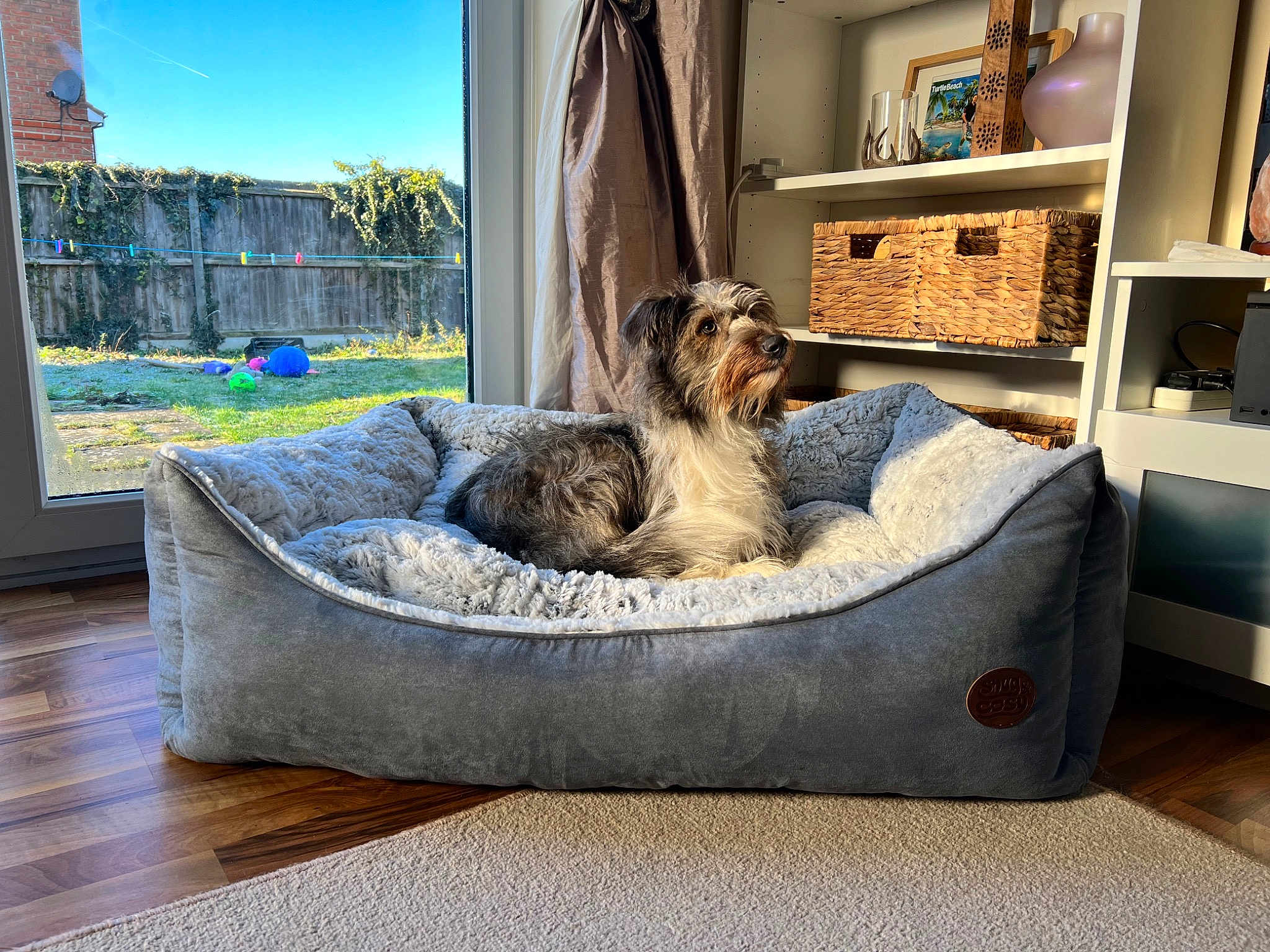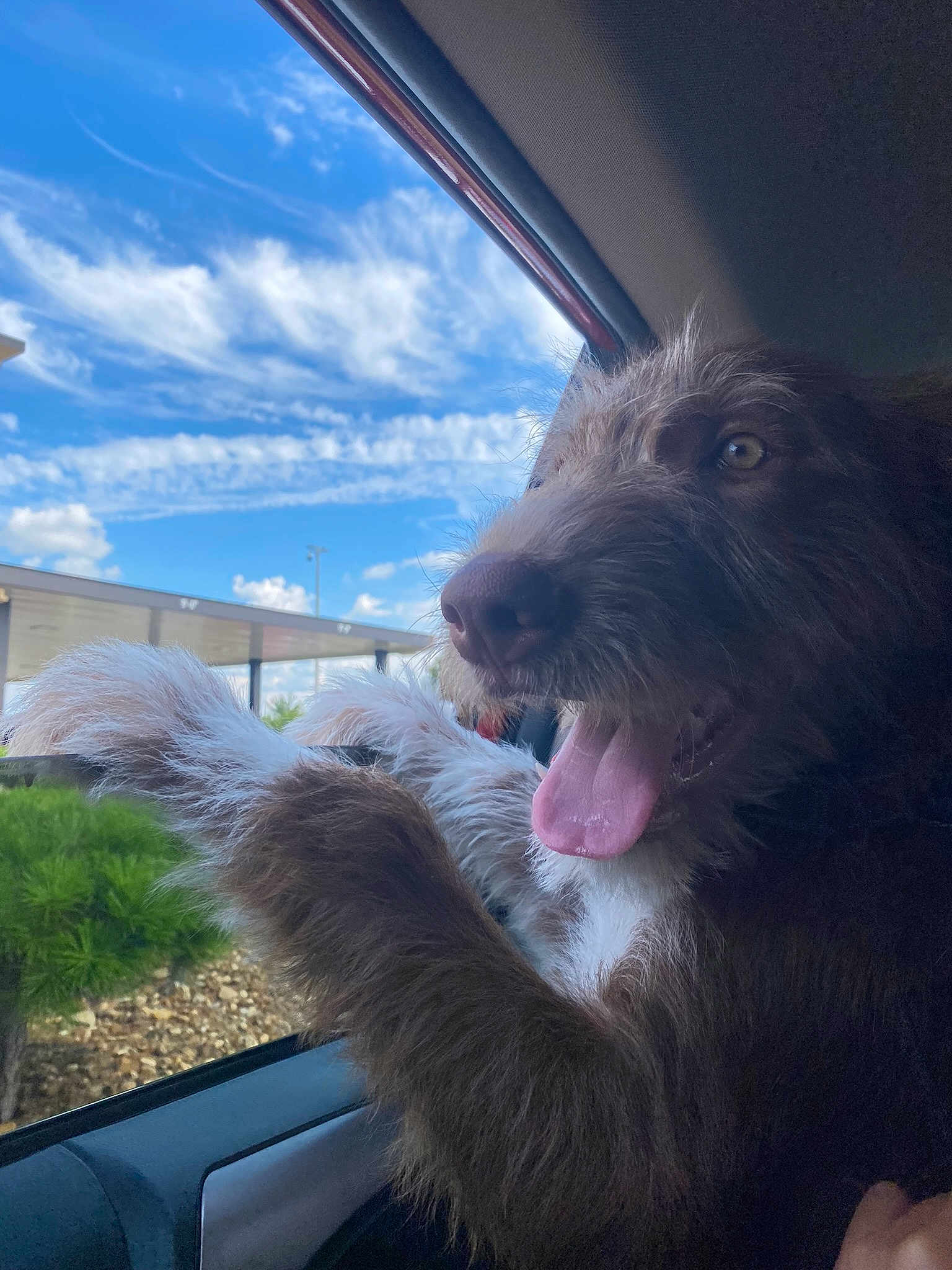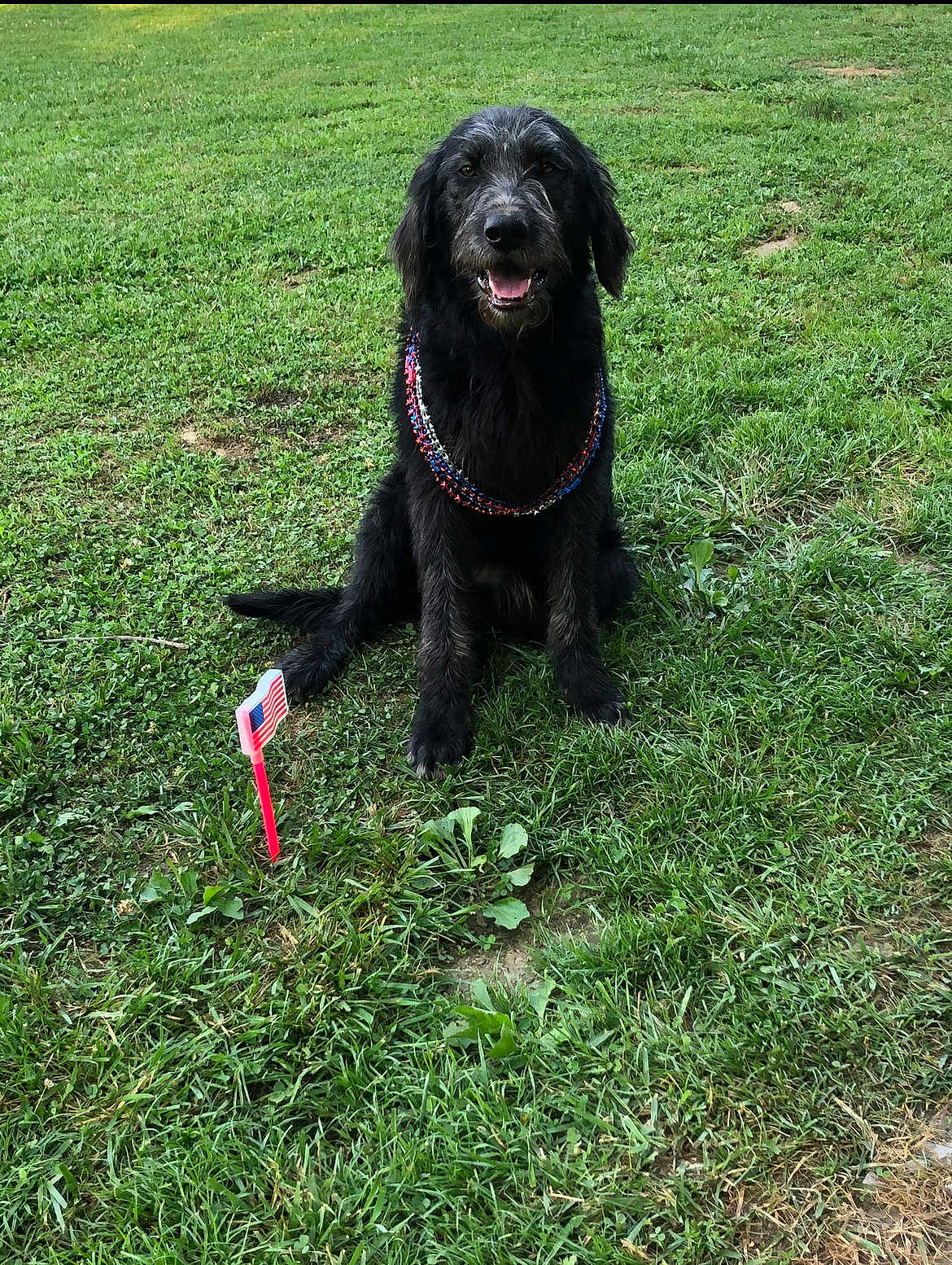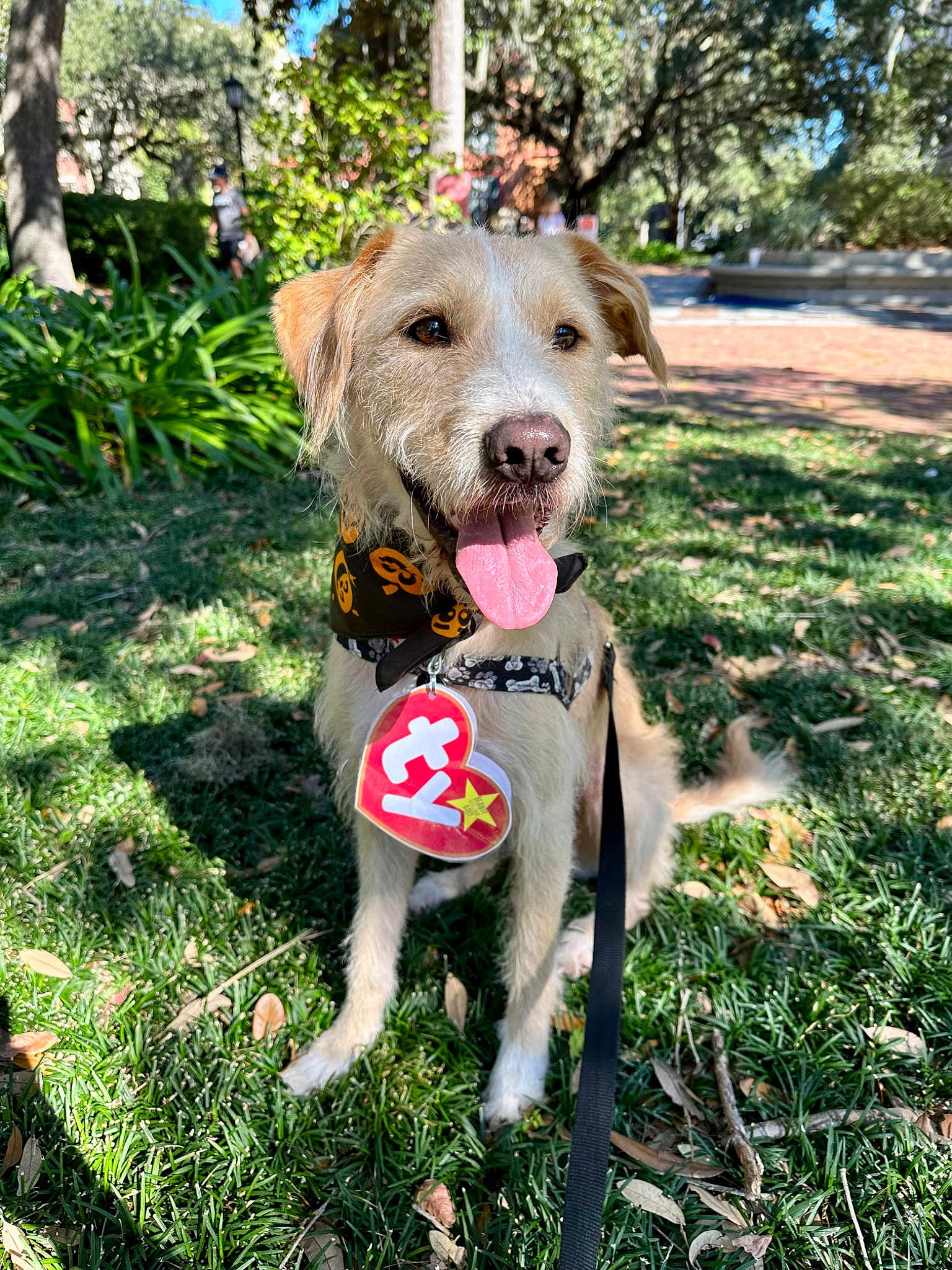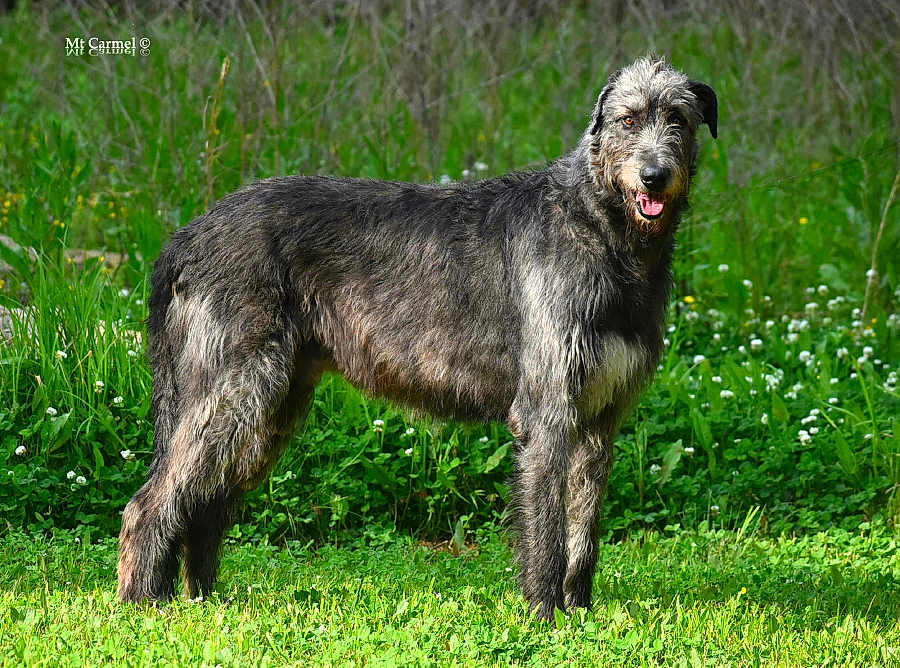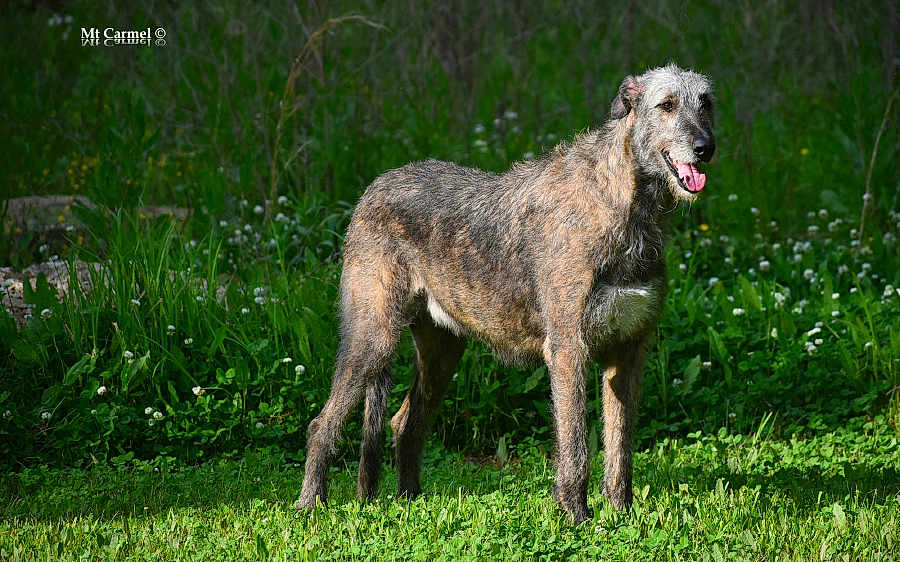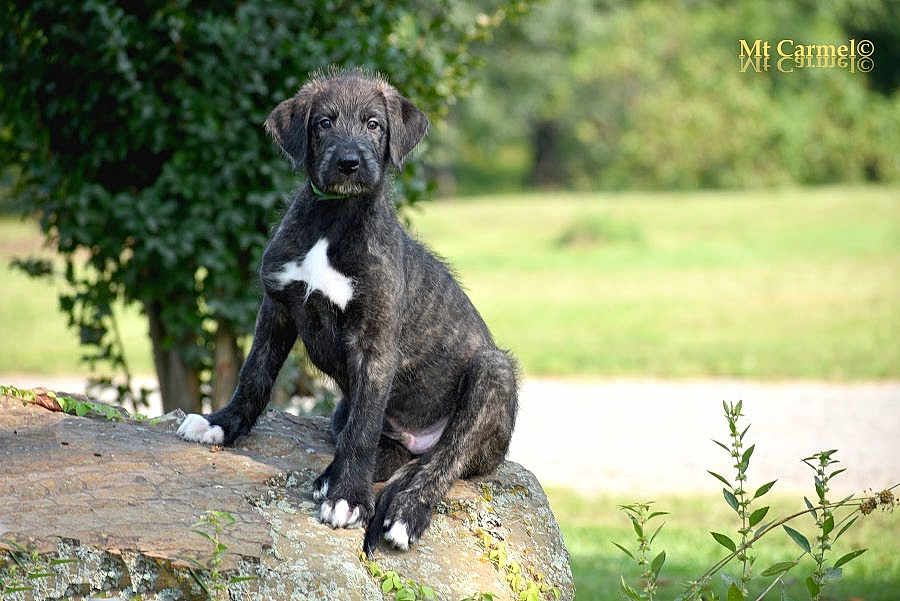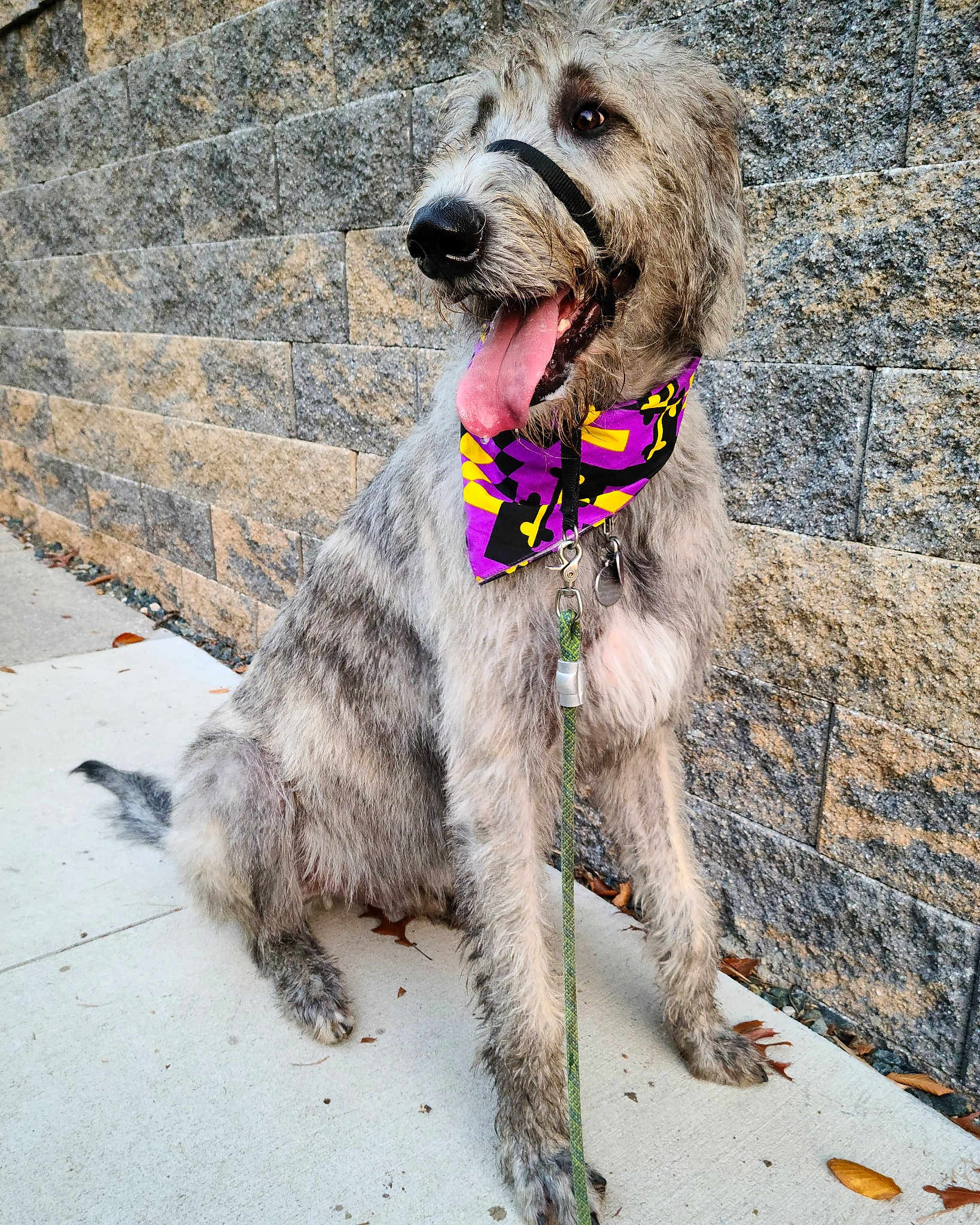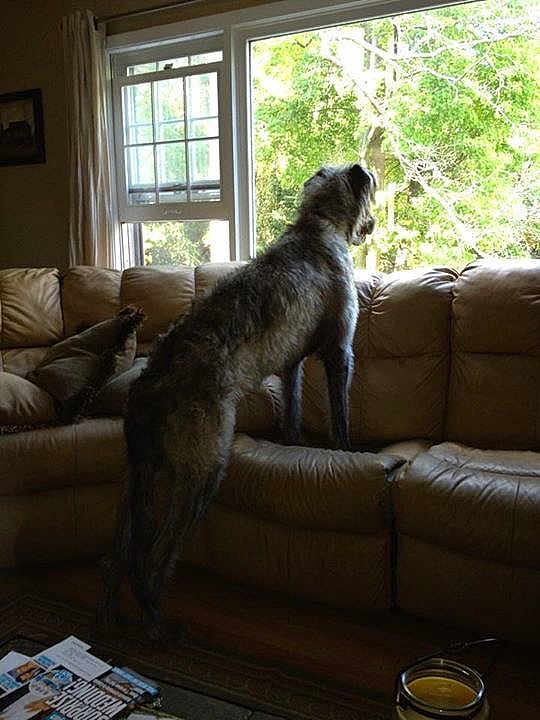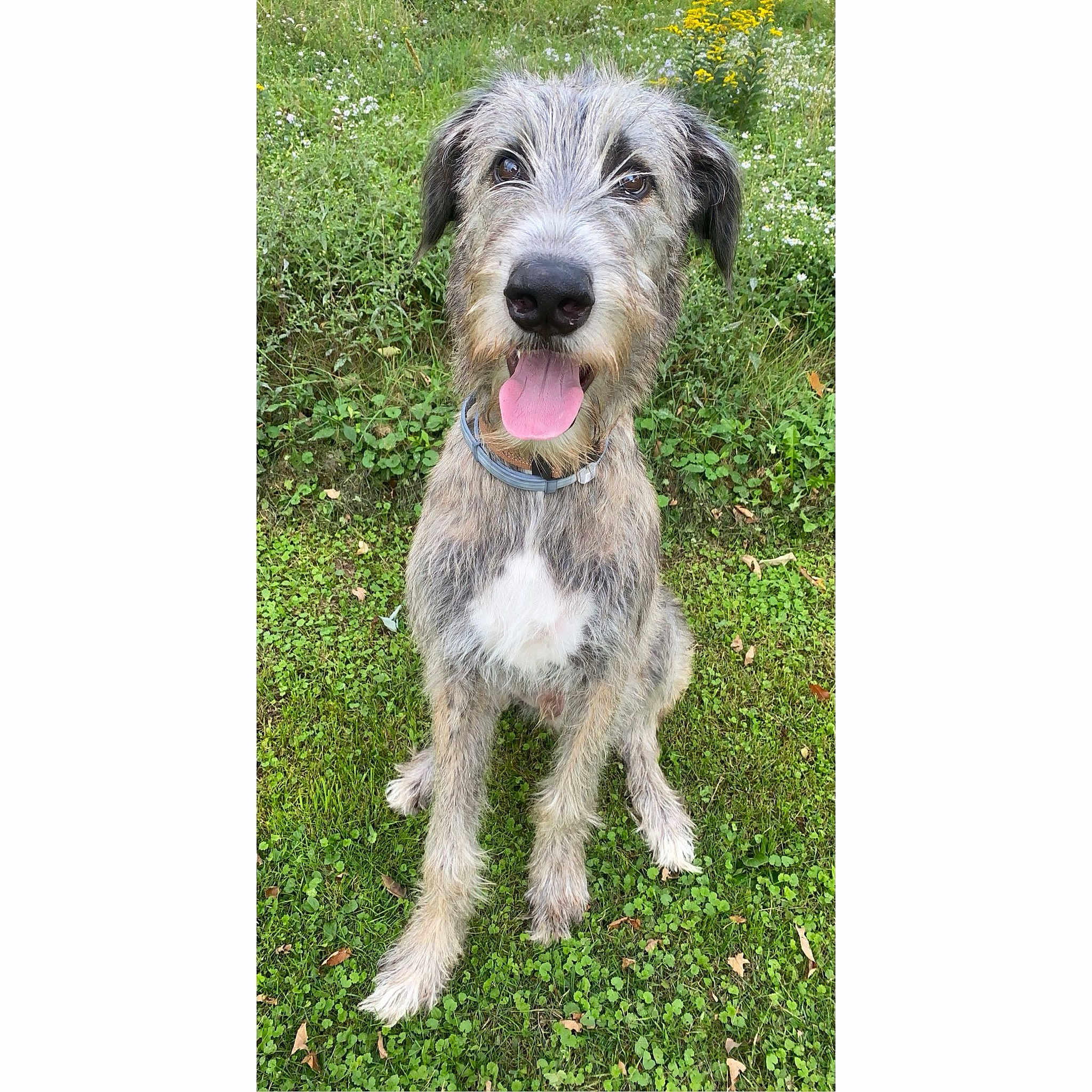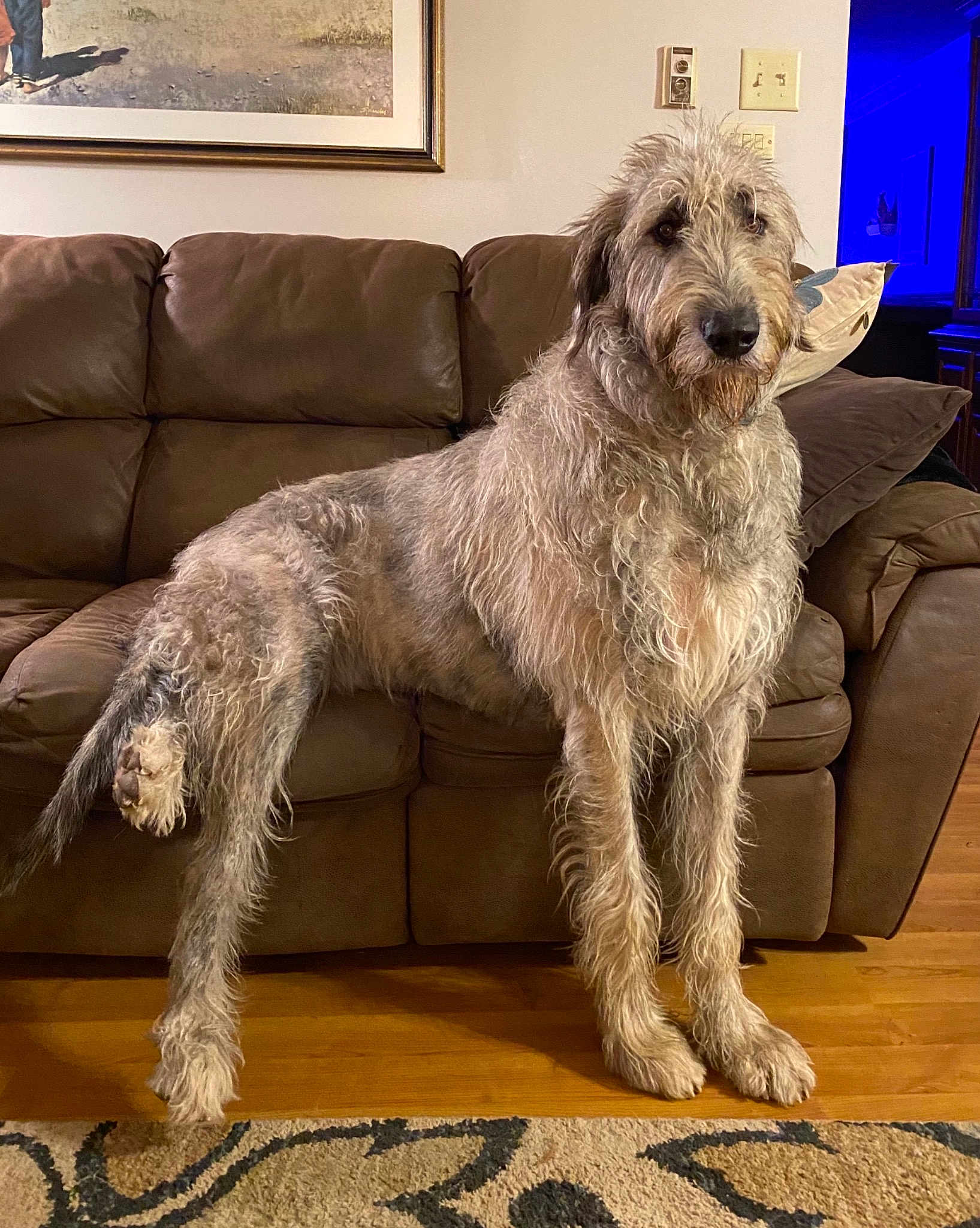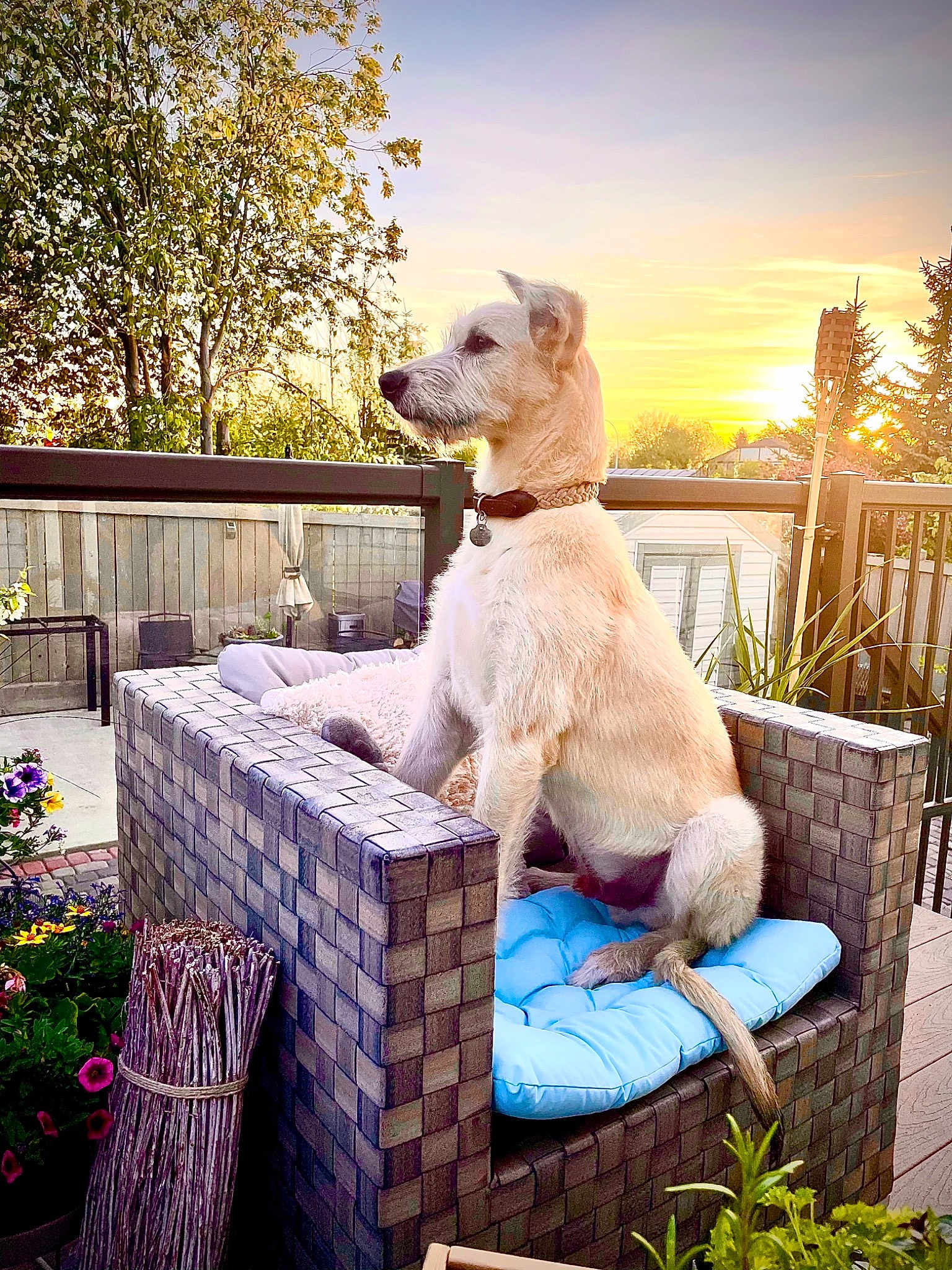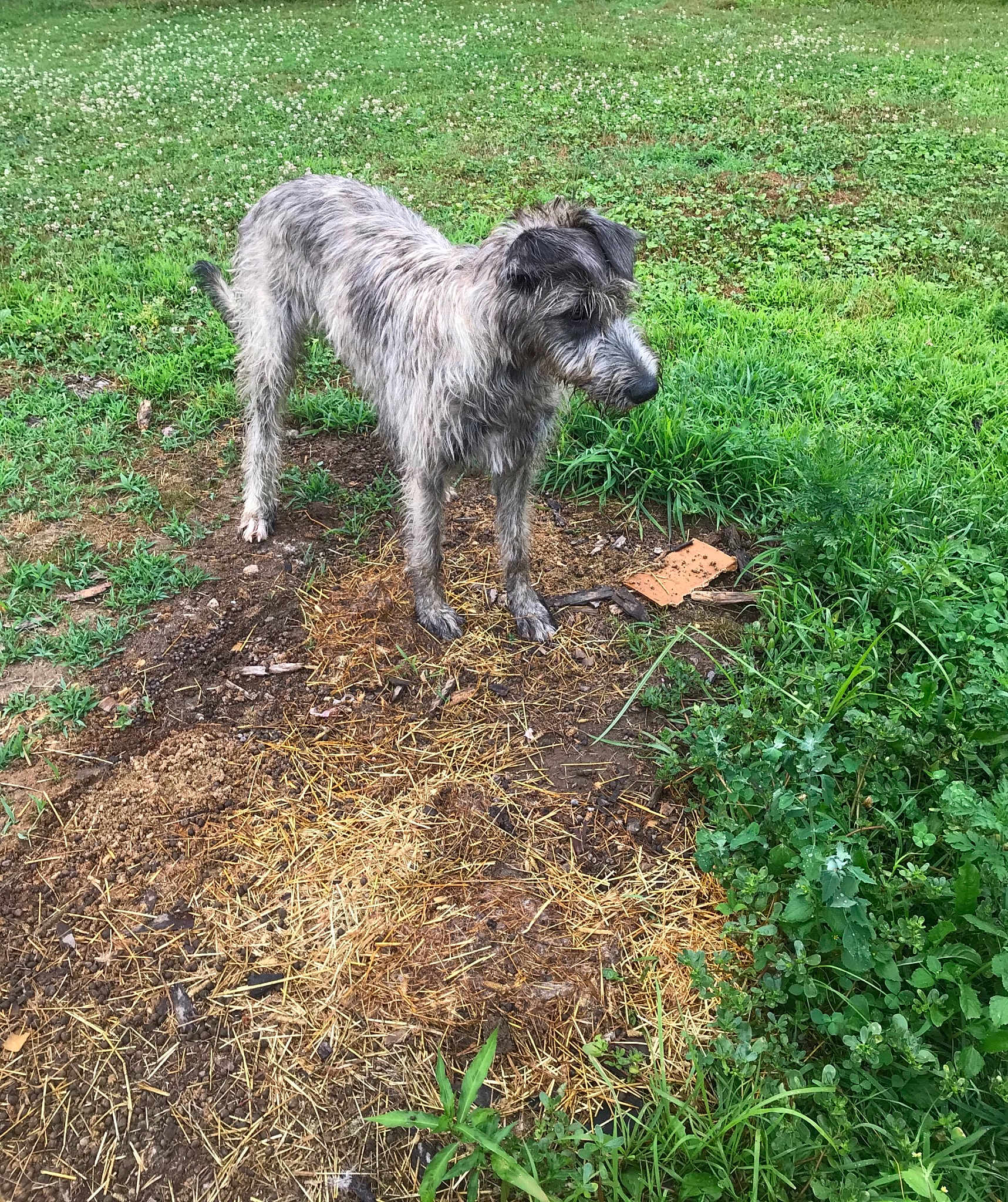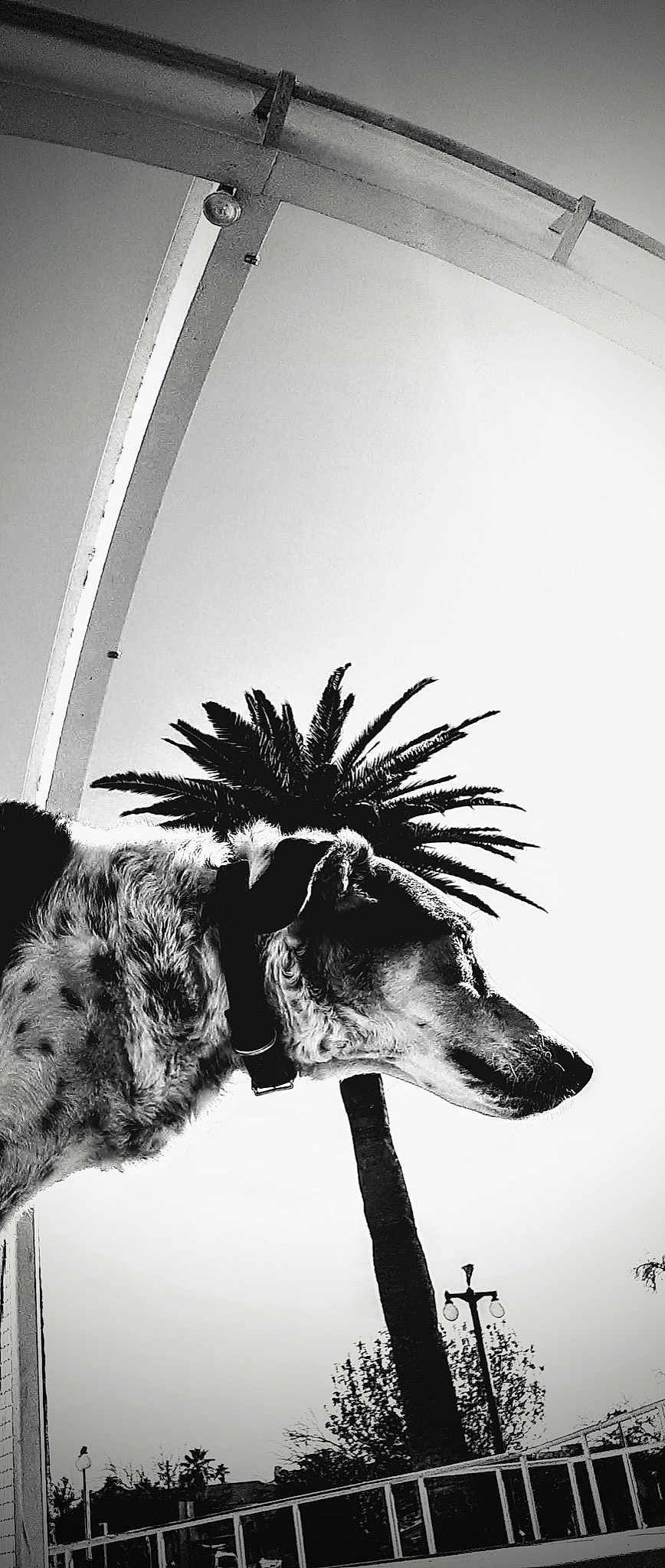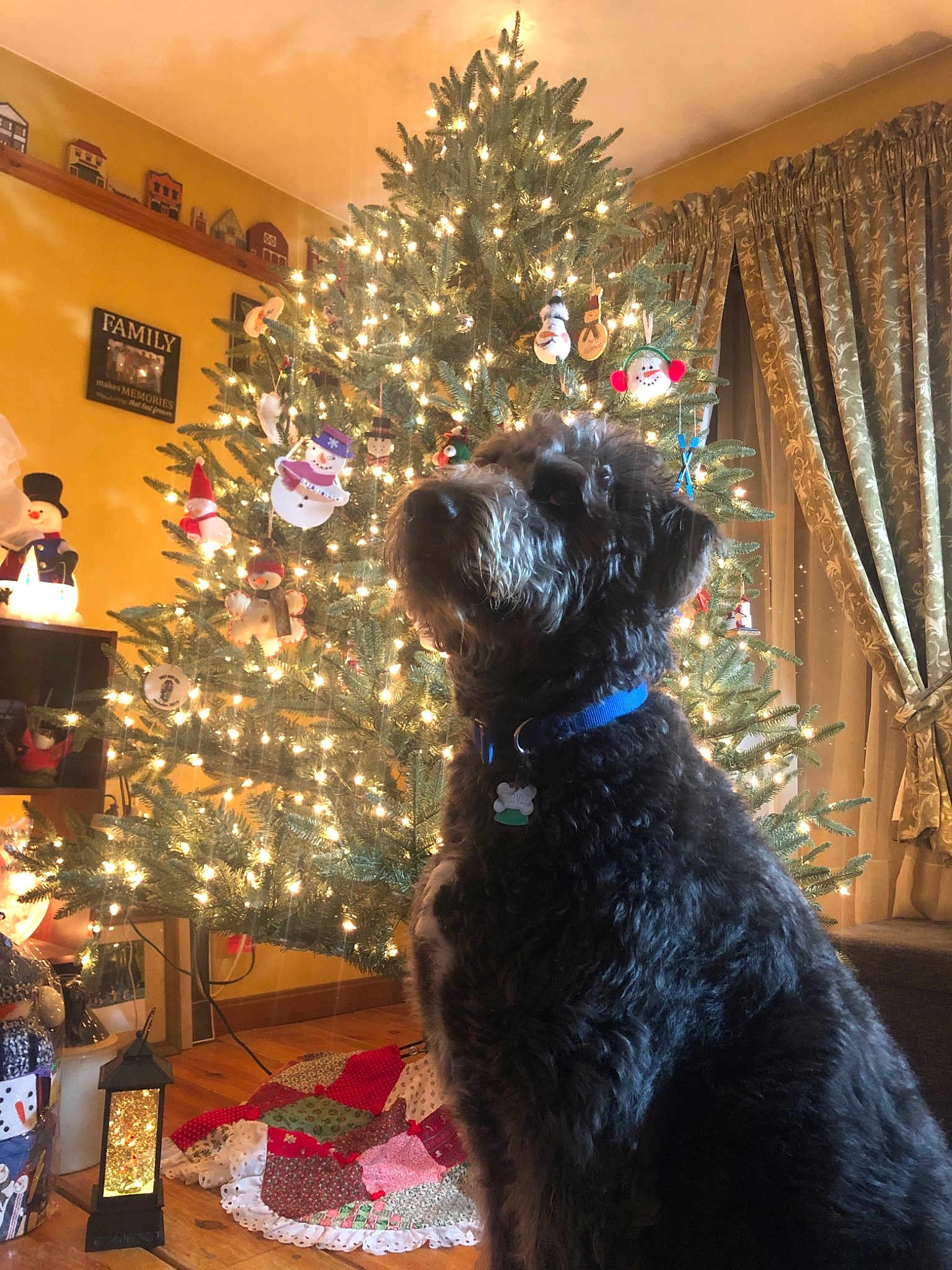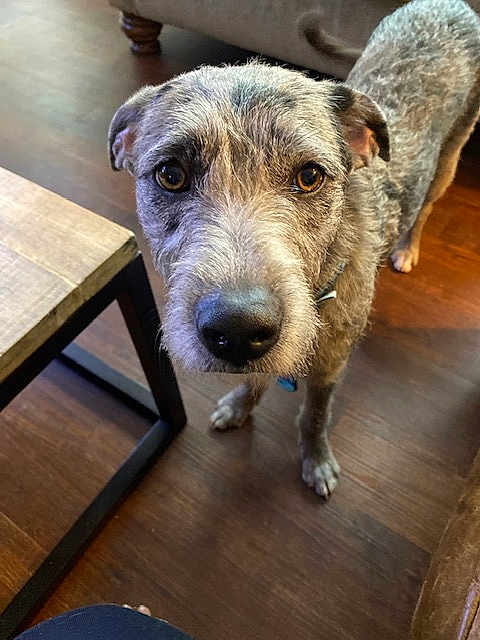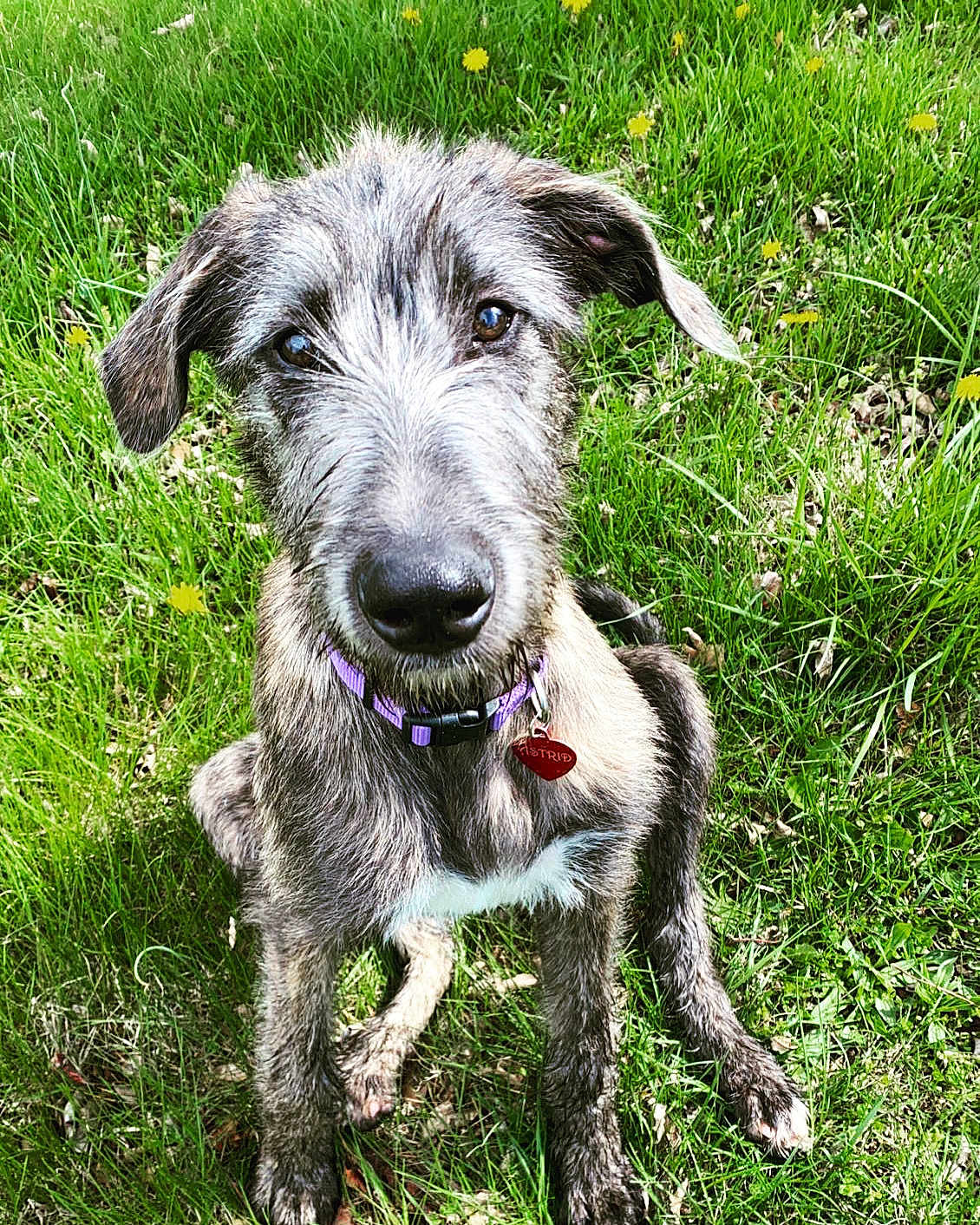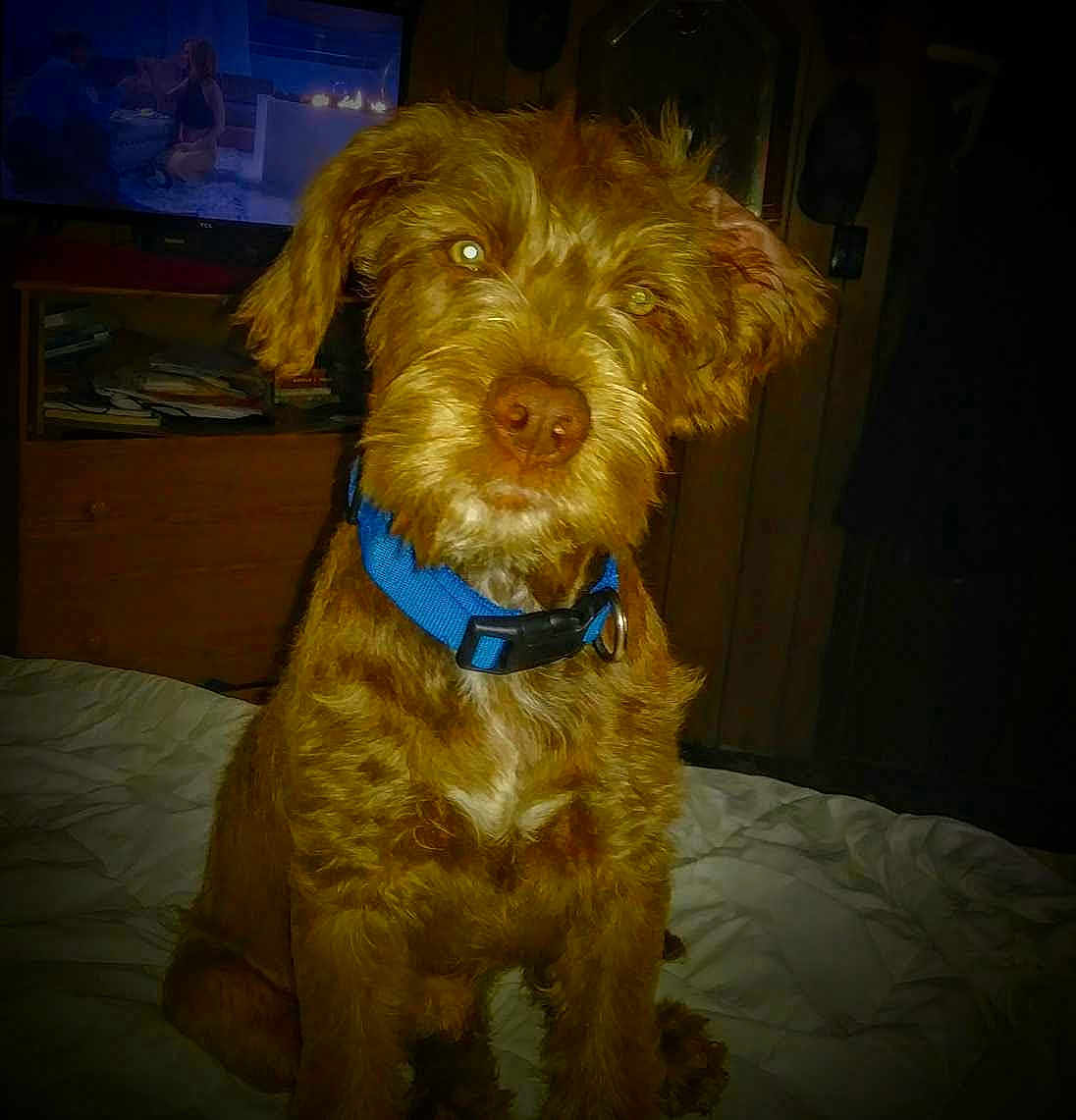"Gentle giants with a noble stature – the Irish Wolfhound stands tall, not just in height but in history, capturing hearts with their graceful demeanor and unwavering loyalty."
Personality and Behavior of the Irish Wolfhound
Irish Wolfhounds are often referred to as "gentle giants" due to their combination of considerable size and gentle disposition. Despite their towering presence, these dogs are known for their calm and friendly demeanor, making them excellent companions. The breed exhibits a remarkable calmness and is often gentle with children, showcasing their innate ability to blend well within family settings.
These dogs are well-regarded for their loyalty and affectionate nature. They thrive on companionship and are known to form deep bonds with their human families. The Irish Wolfhound's keen sense of empathy and gentle, patient nature offers a therapeutic presence, which has often been harnessed in therapy and support roles.
Equally important is the breed’s regal bearing and dignified mannerisms. Although they possess hunting origins, modern Irish Wolfhounds are typically calm and introspective, often preferring the quieter company of their owners over more rambunctious environments. Their presence is often a calming influence, echoing both their historical nobility and their current role as cherished family members.
Their behavioral traits also include an instinctive protectiveness and heightened alertness, without being overtly aggressive. While they might not bark incessantly, their colossal size and watchful presence often suffice as a deterrent to unwanted intruders.
"Irish Wolfhounds embody a blend of sublime gentleness and noble strength, capturing hearts with their sweet spirit despite their imposing size."
Meanings, History and Origins of the name Irish Wolfhound
The name "Irish Wolfhound" is steeped in historical context and functional description. It directly denotes the breed's origins from Ireland and reflects their historical purpose — hunting wolves. Going back as far as 391 AD, these majestic dogs have carved a significant niche in history, initially bred for their size and strength to hunt large game.
Beyond their utilitarian role in hunting wolves, Irish Wolfhounds were also historically used in warfare, pulling men off horses and chariots. This dual functionality as hunting companions and warriors has influenced much of their historical narrative and the reverence associated with their name.
The breed’s resurgence in the 19th century is largely attributed to an enthusiastic captain, George Augustus Graham, who worked tirelessly to revive the breed after it neared extinction. His dedication to maintaining the breed's historical precision has ensured the Irish Wolfhound’s nobility continues to thrive into the modern era.
The name itself conveys nobility and strength while reflecting the cultural heritage of Ireland. Often seen in Celtic mythology and literature, the Irish Wolfhound captivates a sense of folklore and historical gravitas, making it a name imbued with tales of bravery and loyalty.
Popularity of the Irish Wolfhound
The Irish Wolfhound's popularity has seen ebbs and flows over centuries but has remained largely consistent due to its noble stature and reassuring demeanor. Their status has transitioned from historical hunters to modern-day companions, illustrating their adaptability and enduring appeal.
In English-speaking countries, particularly the United States and the United Kingdom, the Irish Wolfhound holds a respectable place among dog enthusiasts. Its substantial stature and historical lore captivate many, making it a favorite among those drawn to unique and historic breeds.
Globally, the breed enjoys admiration, albeit in niche circles. Countries with a rich history tied to hunting or a connection to Irish culture often have a higher appreciation for the breed. The Irish Wolfhound's portrayal in media and literature further perpetuates its appeal, ensuring its recognition in various corners of the world.
The breed's participation in dog shows and contests also highlights its continued popularity. Its grace and composure on such stages translate into a broader understanding and admiration of the breed, contributing to its sustained popularity in a contemporary setting.
Health and Care of the Irish Wolfhound
Though majestic, Irish Wolfhounds do come with specific health considerations that need to be understood for proper care. They are prone to particular genetic conditions, such as hip dysplasia and heart issues, including dilated cardiomyopathy. Regular veterinary check-ups are essential to monitor these potential health concerns and to ensure early detection and management.
Dietary needs for Irish Wolfhounds are critical, given their substantial size and growth rate. A balanced diet rich in proteins and essential nutrients supports their bone and muscle development. Careful attention to their weight can prevent added stress on their joints and heart, which is paramount for such a large breed.
Exercise is another cornerstone of their care regime. Though they enjoy lounging around the house, Irish Wolfhounds also require regular, moderate exercise to maintain their health and happiness. Long walks and ample space for light runs suit their demeanor well, ensuring they remain both mentally and physically stimulated.
Grooming needs are relatively straightforward. Their rough coat requires regular brushing to prevent matting and to keep their coat healthy. Routine maintenance, such as nail trimming and ear cleaning, adds to their overall well-being, highlighting the importance of a consistent grooming regimen.
Training and Education of the Irish Wolfhound
Training an Irish Wolfhound is a rewarding but sometimes challenging endeavor due to their size and strength. Early socialization is key, exposing them to a variety of people, environments, and other animals. This ensures they grow into well-rounded adults capable of handling different situations with grace.
Positive reinforcement training methods are especially effective for this gentle breed. They respond well to praise and treats, making training sessions more fruitful and enjoyable. Consistency and patience are pivotal, as their larger size can make them a bit slower to mature compared to smaller breeds.
Their intelligence and willingness to please can make obedience training relatively smooth. Starting with basic commands and gradually advancing to more complex training helps in harnessing their instinctive behaviors into well-mannered traits.
One common challenge in training Irish Wolfhounds is managing their natural protectiveness without fostering unnecessary aggression. Teaching them commands that promote calmness and establishing yourself as a confident leader helps mitigate this issue, fostering a balanced and peaceful demeanor.
In choosing the right dog, consider your lifestyle, space, and the time you can dedicate to caring for and training a larger breed. The Irish Wolfhound’s blend of gentleness, loyalty, and historical charm makes it an excellent choice for those ready to welcome a giant yet gentle companion into their lives.
Breeds are not just pets; they are bridges to bygone eras, reflections of cultural heritage, and symbols of unwavering companionship. At KingPet, we see a lot of Irish Wolfhounds participating in our contests, showcasing their balanced demeanor and gentle beauty. Selecting an Irish Wolfhound brings not just a pet, but a piece of nobility and history into your home, along with unmatched affection and loyalty.











